






iving in a rural area with no neighbours means I’m a little out of touch with things sometimes.


politely insisted I adjusted my mask if it’d slipped down a bit. I tried to get into a cab and the driver apologised and explained I wasn’t allowed to sit in the front. Having two people in the front could attract a $4000 fine. Hotels weren’t much different.
‘You must wear a mask in public areas

“ Living in a rural area with no neighbours means I’m a little out of touch with things sometimes. ”
After a year or so of sticking close to home I found myself staring at a busy travel schedule for this issue, and it was a little difficult to cope with all the rules and regimentation associated with simply moving through cities. Airports demanded I wear a mask to enter, check in with a phone, use hand sanitiser, not touch any paper and stay away from other travellers. People wandered up and
or we’ll have to ask you to leave,’ was the polite but common warning.
And don’t forget to check out of places with a phone or you could get a very stern text.
One of the things which used to be interesting about riding in Asia was the number of people who wore masks as
part of their everyday apparel. There weren’t always a lot of helmets in evidence on the thousands of riders clogging city and village streets, but breath masks were everywhere. I used to think it was interesting. I could understand why countries with such incredibly dense populations and so little elbow room would feel a mask was a good idea. Everyone was pretty much on top of everyone, all the time, everywhere, and by western standards hygiene was a bit how’s-your-father. Now it’s accepted in Australia, too. I believe it’s entirely sensible and I conform as best I can, but can you imagine how it felt after each bout of travel to gaze across the subtropical rainforest of northern NSW? To slide the helmet off and take deep breaths of the crisp, clean air of the Victorian high country? To gaze in awe at some of the rugged, bike-breaking terrain of the Blue Mountains in NSW?
If you can imagine those things, and the thought near rips your heart from your chest, you must be an adventure rider too.

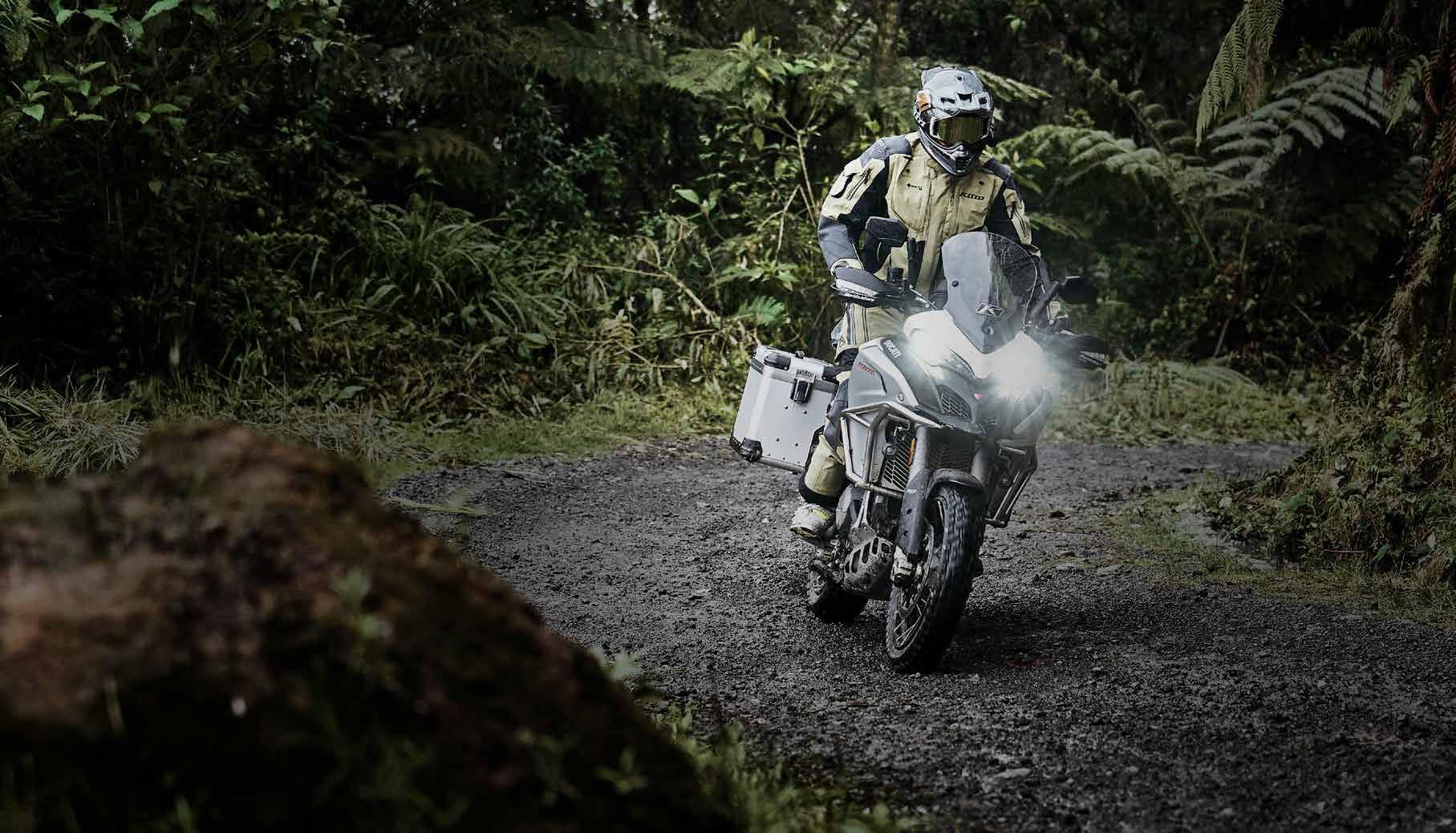





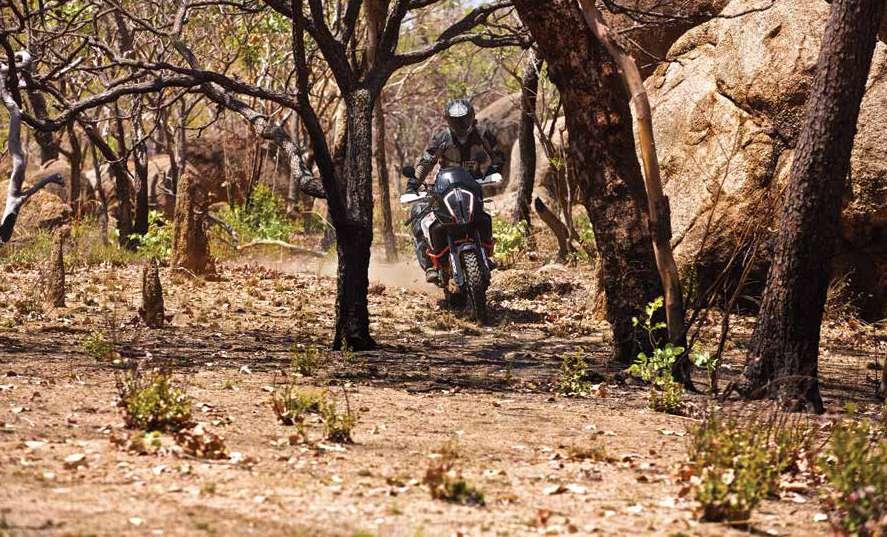

WATERPROOF







tom@maynemedia.com.au
mitch@maynemedia.com.au
Phone: (02) 9452 4517
Mobile: 0402 202 870
Production
Arianna Lucini
arianna@maynemedia.com.au
Design Danny Bourke art@maynemedia.com.au
Subscriptions (02) 8355 6841/(02) 9452 4517 arlette@maynemedia.com.au





8 advridermag.com.au Adventure


BMW’s 2021 flagships are an incredible mix of high-tech performance wrapped in a salute to 40 years of the world’s premier dualsporter.

Left: The 40 Year Anniversary 1250 is a technically excellent bike with a retro look which salutes its heritage.
Right: The bumblebee colour scheme.

Whether or not you’re a ‘BMW person’, there’s no denying the GS has had a huge impact on not only dualsporting and the emerging adventure-riding sector, but on motorcycling in general. While the rest of the world was frothing at the split over bikes with an increasingly narrow focus on sports performance or off-road ability, BMW embraced the idea of a bike which would be a capable all-rounder. The GS, which, to quote BMW, ‘…has proudly stood for limitless adventure on and off the road since 1980’, has gained continually greater acceptance over the years and now stands proudly at the pinnacle of the adventure category – a category BMW might be justified in claiming to have pursued and defined.
Tech and tradition
It’d be easy to say, ‘the good ol’ boxer twin’, and this motor really encapsulates the concept we mentioned where BMW has embraced both serious performance technology but continued with a traditional base.
“ The GS has proudly stood for limitless adventure on and off the road since 1980 ”
For 2021, the R1250GS and GSA represent the very best of BMW’s endeavours so far.
The 1254cc liquidcooled horizontally opposed twin delivers 136hp and 143Nm of torque, and of course features the BMW ShiftCam system we found so awesome when we first rode it in 2019. BMW claims ‘superior power across the entire speed range’ which we reckon is a fair call, and ‘outstanding consumption and emission values’ which we didn’t measure, but are pretty sure would be spot on as well. BMW is very good at that kind of thing. There’s a new ‘Eco’ mode standard on the GS and GSA for 2021, and while we didn’t try it, columnist Miles Davis was convinced he was getting some
u



eyebrow-raising fuel-economy figures from his experimentation. Both GS and GSA have Dynamic Traction Control and Integral ABS Pro as standard, and we were impressed with the confidence it gave on the tight, shadowed mountain roads of Victoria where we couldn’t tell what the surface was like with any certainty. The standard bikes offer Eco, Rain and Road modes, but our test bikes had been optioned up so we had a bigger choice. We very quickly learned we could trust the bike to deal with uncertain road surfaces if we selected Dynamic Pro. Optioning up these bikes needs a closer look.
The pricing on the bikes is a little involved, so we’ll include it separately which should make things clear. Very few buyers will opt for a standard bike because the available add-on equipment and technology is just too frigging good to ignore, and the package price is too good to miss.
Using the standard R1250GS (from $23,170 plus on-road costs) as an example, there are four optional packages: Comfort, Touring, Dynamic and Lights.
The Comfort Package includes keyless ignition, chrome headers, heated grips
and a heated seat. The Touring Package adds preparation for a GPS, cruise control, hand protection, pannier fasteners and tyre-pressure monitoring. A Dynamic Package adds Dynamic ESA, Gear shift assistant Pro, Riding Modes Pro and MSR (Dynamic brake control), and last up is the Lights Package which gives Adaptive Headlight, Daytime Riding Light, Headlight Pro, Cruising Light and multifunction indicator lights. u
Above: The bike’s electronics could be trusted on uncertain surfaces.
Above inserts: BMW Motorrad put together some examples of the GS throughout the years.
Below: The TFT screen is easy on the eye and the menu fairly straightforward.
Note the ECO mode shown in the topright corner.


We had all those things to try on the different bikes we rode, and reckoned they were all great equipment. There’s also a stack of optional equipment available as individual items, things like a sports silencer, low suspension, lightweight battery, additional lighting, an antitheft alarm system, black or gold cross-spoke wheels and a low seat. We rode the 40 Year Anniversary edition with a few different variations of accessories and honestly can’t recall seeing a bog-stock standard bike at this review.
So there’s quite a few variations of the GS and GSA and a stack of accessory possibilities available from the dealer, and we’ll leave it to them to explain to customers. The good news is, the bike can be rolled off a dealer floor with a very high level of personalisation achieved with high-quality BMW equipment.
Looking good
BMW has offered a few colour schemes, and while it’s not something we would normally pay a lot of attention to, the 2021 bikes really look striking. For our ride Beemer supplied a mix of ‘Light White/ Racing Blue Metallic/Racing Red’ – which we thought of as ‘the red, white and blue ones’ – and Black Storm Metallic – which we thought of as ‘the blacky-grey ones’ –and the 40th Anniversary which we called ‘the bumblebees’. There were also one or two Black Storm Metallic/Black/Achat Grey variations of the Triple Black – which we thought of as ‘the horn ones’ and which caused embarrassing bulges in our Rally Pro duds whenever we saw one.
All colour variations looked fantastic, and we felt made a strong connection to the GS of decades past.
Hands on


With all that and a great deal more swimming around in our brains we climbed on board a gorgeous R1250GSA and set about following Miles Davis on an absolutely superb-looking Rallye X. We rolled through the Melbourne suburbs and out to some truly beautiful and
Top right: Option 719 cylinder-head covers.
Middle right: An excellent tribute to 40 years of a great bike.
Right: Braking is really excellent front and rear. Enduro Pro mode allows aggressive braking off road.
u




Above: The whole bike’s performance is exceptional. Below: The GS and GSA are a real pleasure to wind along a narrow mountain road.
amazing dualsport terrain not far from the city.
And that’s where the Beemer is really a standout.
For a bike that’s very capable off road, its performance on bitumen, especially crap Australian backroads with shitty surfaces, is unbelievable. The ride is smooth and the whole bike’s performance is so exceptional it’s a real pleasure to
wind along a narrow mountain road having both front and rear suspension soak up the ruts, bumps and potholes that would throw lesser bikes off their line. On the freeway the motor is smooth and the comfort level incredible. With cruise control, the adjustable windscreen, and the beautiful, open riding position, longdistance hauls are a dream. The TFT
u

R1250GS: from $23,170
R Comfort package $1170
R Touring package $1465
R Dynamic package $2185
R Lights package $1115
R1250GS Rallye: from $31,090
R Above packages standard
R1250GS Rallye X: from $31,430
R Above packages standard
R Sports exhaust
R Enduro Package (sports suspension, ’bar risers, off-road tyres, engineprotection bars)
R Style Rallye (rallye bench seat)
R1250GS Triple Black: from $30,335
R Comfort, Touring, Dynamic and Lights packages standard
R Style Triple Black (black livery, billet mirrors) standard
R1250GS 40 Years GS: from $32,590
R Above packages standard
R Comfort, Touring, Dynamic and Lights packages standard
R 40 Year package (Option 719 cylinder-head covers, gold wheels) standard
R Passenger kit (two-piece seat, standard windshield and centrestand) standard





screen is so easy to read, and the menu system so simple to operate, even freeway riding is fulfilling. Heated seats and heated grips are icing on the touring cake. On this ride we didn’t tackle any serious off-road terrain. There was plenty of dirtroad riding and we felt BMW Motorrad had thrown a bullseye on the type of riding 95 per cent of owners would do on bikes like these. There was dust, choppy dirt roads, some wheel ruts and tight turns here and there, but no single-track, steep hills or crazy deepwater crossings. We know from experience BMWs will handle that kind of extreme terrain, but we doubt most owners would ever go looking for it and, to be honest, on a beautiful, sunny, warm Victorian afternoon, we were glad not to have to confront those things. This ride on these bikes was incredibly
enjoyable. We didn’t want it to end.
Worth a mention
Although we enjoyed the bikes and the ride so much, it was only a short run, so there’s a lot we didn’t get to try in depth. There were few things which really stood out to us, though.
The electronics in the 1250s are awesome. The riding is so seamless and easy, and, in what we feel is the highest recommendation we can give, a lot of time we couldn’t be sure when the electronics were intervening. We ended up using only the Dynamic Pro mode on the road and the Enduro Pro mode off road. There’s allowance for the rider to personalise the settings within each mode, but we didn’t see any need and didn’t really have time to mess around
much with that kind of detail on this ride. Miles Davis made it look easy in his demo, but there was a lot we wanted to get through, so we took his word for it. Dynamic Pro did the bizzo chasing the pack along the asphalt and Enduro Pro gave us all the latitude we needed to get the most from the incredibly smooth donk. Switching to Enduro Pro via the press of a button – there’s no need to remove the seat to switch plugs as was the case previously – meant there’s no ABS on the rear and the front allowed some very aggressive braking. Maybe even a little locking – we can’t be sure about that, but that’s how it felt – and the rear wheel stepped out with the throttle open in the nicest possible way without any nasty surprises. Enduro Pro made us feel like real off-road riders.
Main: Mountain backroads are a pleasure on the whole GS range.
Insert: ‘The red, white and blue ones’.
Overall the GS and GSA don’t feel big, and that’s very interesting. They’re undoubtedly big bikes, but the impression from behind the ’bars is different. It’s hard to explain. We want to say the bikes made us feel we wanted to be aggressive with them, especially off road, but that’s not quite hitting the mark, either. They feel sporty, comfortable, have superb handling manners and we really couldn’t come up with anything about them we didn’t like.
Find out for yourself. Get to a dealer and give the 40th anniversary GS and GSA a look. It’ll be time well spent.
Engine type: Air/liquid-cooled four-stroke flat twin engine, double overhead camshaft, one balance shaft and variable engine timing system BMW ShiftCam
Capacity: 1254cc
Bore x stroke: 102.5mm x 76mm
Rated output: 100kW (136PS) at 7750rpm
Maximum torque: 143Nm at 6250rpm
Compression ratio: 12.5:1
Mixture control: Electronic intake pipe injection
Emission control: Closed-loop. Three-way catalytic converter, emission standard EU-5
Maximum speed: Over 200kph
Fuel consumption per 100km based on WMTC: 4.75 litres
CO2 emission based on WMTC: 110g/km
Fuel type: Unleaded super, octane number 95 (RON), Adaptive fuel quality regulation (91 to 98 RON)
Alternator: Three-phase with 510-watt nominal power
Battery: 12-volt/11.8Ah, maintenance-free
Clutch: Wet clutch with an anti-hopping function, hydraulic activation
Gearbox: Constant-mesh six-speed with helical gear teeth
Drive: Shaft drive
Frame: Two-section frame, front- and bolted on rear frame, load-bearing engine
Front wheel location/suspension: BMW Motorrad Telever, stanchion diameter
37mm, central spring strut
Rear wheel location/suspension:
Cast aluminium single-sided swingarm with
BMW Motorrad Paralever; WAD strut (travelrelated damping), spring pre-load hydraulically adjustable (continuously variable) at handwheel, rebound damping adjustable at handwheel
Suspension travel front/rear: 190mm/200mm
Front brake: Dual disc brake, floating 305mm discs, four-piston radial callipers
Rear brake: Single 276mm disc brake, double piston floating calliper Wheelbase 1504mm
Castor: 95.4mm
Steering-head angle: 65.1º
Wheels: Cross spoke wheels Rim, front: 3.00 x 19” Rim, rear: 4.50 x 17” Tyre, front: 120/70 R 19 Tyre, rear: 170/60 R17
ABS:

Winter’s well and truly here, and one of the biggest hazards for riders in the cold is a fogged visor. Reduced vision is shitscary dangerous. There’s some good preventative measures available these days, and here’s a few to consider.
Images: Marty Blake



Visors fog because a rider’s breath contains a fair level of moisture. Without getting too involved, it’s fair enough to assume a human’s exhaled breath holds the maximum amount of water it can. Another way of saying it is the relative humidity of an outward breath is 100 per cent.
When that fully saturated breath hits cold air or a cold surface the water condenses. That’s why we puff steam when we breath in cold conditions. When it’s chilly a rider’s helmet visor gets cold. Outward breath hits the visor and the water content of the vapour condenses on the cold surface. If we could stop our breath hitting the cold surface we wouldn’t have a visor-fogging problem, and that’s where the most common solutions lie.
The first and most common system to help avoid visor fogging is a flexible, lightweight piece of thin plastic which clips in place on the inside-top of the helmet’s chin piece. The function of the plastic shield is to deflect the rider’s outward breath down and away from the visor. It’s been a common feature on road helmets for a very long time, but the adventure crew has been bit slower on the uptake. Clip it out and stow it when it’s warm, snap it in place when it’s cold. Easy-peasy.
None of the helmets in the Adventure Rider Magazine shed have this feature at the moment, and we’re not really sure why. The idea works well, is low-tech and costs very little. We’ve seen some interesting makeshift nose cones made from cut-up cereal packets and bits of soft-drink bottles duct-taped in place. That’s how simple the idea can be, and it can be very effective.
u
Far left: Poor vision from a fogged visor is one of the big hazards of riding in the cold.
Far left insert: UGAM inserts are comparatively inexpensive.
Top left: Here’s a standard visor with no measures taken to avoid fogging.
Left: The UGAM is a strip which fits across the interior of any visor. The anti-fogging performance appears to be the same as Pinlock, but the clear-vision area is smaller.
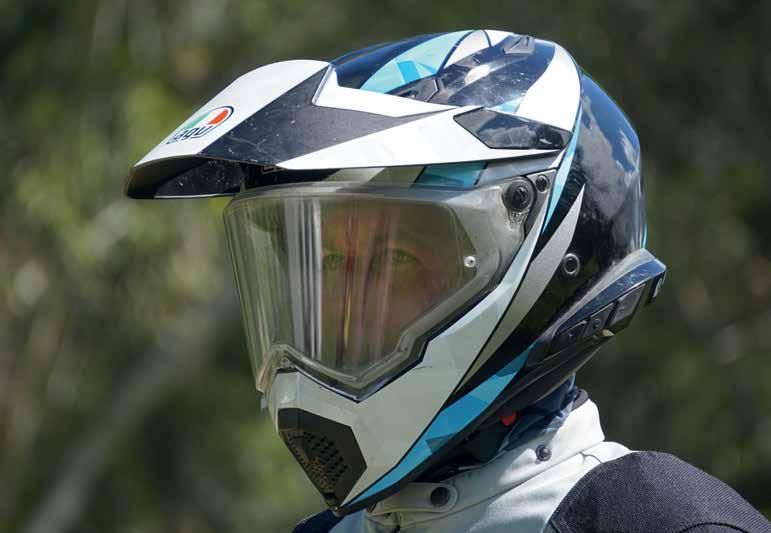

We can’t think what else to call them. They’re a thin sheet of optically correct plastic which adheres to the inside of the visor and leaves a small air gap between the visor and the liner. The air gap provides enough insulation to prevent the inside surface of the liner chilling to the outside temperature, and therefore the exhaled, moisture-laden breath doesn’t condense.
If we said ‘Pinlock’ most readers would go ‘Oooooh!’ and remember they’d read something about that in the material attached to the helmet when they bought it. Or they may have worked out the little
pins on their visor were something to do
Pinlock is certainly the industry standard, and it’s very effective. The thin lexan liner is supplied with a bead of silicon already applied. The rider has only to strip off the protective plastic and fit the liner as instructed. From there they’ll have no more fogging problems.
The Pinlock pins on the visors are eccentric, meaning they can be rotated to make very small adjustments in the
placement of the Pinlock insert, and that allows a snug and precise fit. The Pinlock publicity material claims the insert also has ‘moisture absorbing properties’. We don’t have any way of testing that, so we’ll take it on trust.
The only problem with Pinlock is they’re a bit pricey. Typically the standard, clear inserts run to between $50 and $100, and they’re very specific. If you have a Shoei, you can’t grab a Pinlock for a Schuberth and chuck it in there. You need the
Above: The Pinlock is purpose-built for each helmet model. Coverage is excellent. A close look shows the fogging around the edges. The clear area is the Pinlock. Bottom right: Pinlock is shaped to suit specific visors and locates on pins fitted to the visor itself. The silicon bead ensures an airtight seal. u







An alternative We’ve been using Pinlock for a few winters now and reckon they’re the cat’s miaow, but we were recently given some thing different to try.
UGAM adhesive anti-fog inserts are very similar to Pinlocks. They’re optically correct liners which go on the inside surface of the visor and work in exactly the same way. The difference is, the UGAMs have a bead of squishy adhesive instead of a bead of silicon, and can therefore go in pretty much any helmet. Coverage inside the visor isn’t as precise as Pinlock, but the payback is the UGAMs aren’t brand specific. Just grab one from the shelf at the bike shop and apply it to your visor. Pinlock is shaped to the visor and gives a substantial coverage. The UGAM is more like a window in the foggy centre band of the visor.

The big eye-opener on the UGAM set up is a regular ‘Super Clear’ insert runs to $19.95. The ritzy ones are the photochromatic inserts. They go for $59.95, which is about $190 less than the comparable Pinlock, and are a transitiontype finish where the insert tint increases
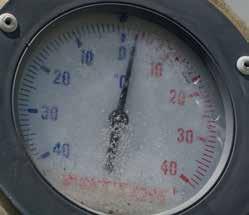




Ashelmet manufacturers put a great deal of research and time into venting options to minimise fogging. So far we haven’t found any helmet that can stay fog-free in the cold without one of these aftermarket accessories. We’ve also tried leaving the visor up and wearing safety glasses, but we haven’t had much success with that. Not only do the safety glasses eventually frost over or fog up, our faces go numb and after a long day the result can be a batch of burst capillaries and a whiskey-schnoz with annoying snot drip. Whatever ideas you may have to deal with the problem, we encourage you to give them a go. Clouded vision is a route marker on the way to Crash City. Anything you do to avoid that is good.
always, Adventure Rider Magazine strove for consistency when planning this story. TF decided he’d wear the helmets, each for about the same amount of time, in the coolroom Marty HC generously made available. What could go wrong?
Top: Two degrees in the coolroom. Perfect. Below: “Just give me 10 minutes, then I’ll jump out and you can get a pic of the fog on the visor!”

Below: “M-m-m-m-aybe just a c-c-c-c-c-ouple of minutes will d-d-d-do for the next one.”

Top: The UGAM from White’s Power Sports has a gooey bead around the edge. Just peel off the protective plastic and wack it on the inner surface of any clean visor.
Above: Pinlock is the industry standard, and with good reason. Visor pins are available separately for those helmets whose visors aren’t Pinlock-ready.



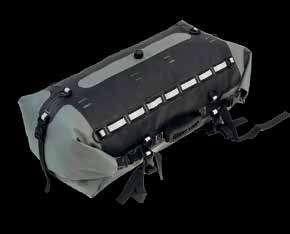







Improving on the 790 was never going to be easy, but KTM has done it. The 890 Adventure R is one sensational motorcycle.
We went crazy-ape bonkers over the 790 Adventure when we rode it in 2019. We couldn’t believe how good the bike was, and we told anyone who’d listen, including KTM, it was the bike all manufacturers would have to try and match. We still think that’s true, but KTM has answered the challenge. The 2021 890 Adventure R with the optional $1195.95


Tech Pack is frigging superb in nearly every department.
For anyone who loves to ride, the 890 Adventure R is a dream come true.
Less is more
A big slice of the bike’s appeal is probably the motor.
It’s an 889cc parallel twin, and while it’s more powerful and torquier than the 790, it doesn’t feel any bigger. It definitely chugs on. Where we felt the 790 might’ve stalled, the 890 just kept on going. We tried some stupid low-speed lugging to see what would happen and the motor refused to quit. The best bit was, when we opened the throttle from those ridiculously low revs, the bike launched in the smoothest way imaginable.
According to the very comprehensive briefing and notes from KTM, this Nirvana is partly the result of new sensors in the 46mm throttle bodies and removal of
Left: More horsepower and torque than the 790, with very similar styling. The 890’s a sharp-looking outfit. u
Right: Any stretch of open dirt road will disappear in a shower of roost and irresponsible behaviour.


Top: The distinctive praying mantis lighting set up is a good one.
Above: Braking front and rear is excellent.
Right: There’s a stack of accessories available from KTM, including an Akro and lighting which illuminates corners. The new adventure suit looks pretty flash.
Below: A TFT screen and simple menu worked well.
the connection between the two intake tracts. A sensor helps momentarily delay ignition if there’s likely to be any knocking, typically from poor-quality fuel.
At the other end of the rev scale our test ride kicked off with a longish highway run, and the 890 motor was smooth and rock solid at freeway speeds.
Some of the new features include three-ring, forged box pistons, new balancer shafts, and new, horizontally split, high-pressure aluminium cast crankcases. A new V-shaped conrod contributes to less oscillating mass, while the reciprocating mass has been increased. The oil cooler is larger than the 790s, and the gearbox benefits from light


spring actions, a shorter shift-lever travel and new settings on the optional Quickshifter+. Fourth, fifth and sixth have been toughened with glass beading, and a Power Assist Slipper Clutch helps keep things smooth.
Spark it up
It’s impossible to separate the engine from the electronics for performance on a bike like this one, and while we were in raptures at the electronics on the 790, this bike is just incredible. It’s not that it’s light years ahead of the 790, but that it’s taken something that was so frigging good and made it even better.
Our test bike was fitted with the Tech Pack, and we can’t recommend it highly enough. It meant the bike had motor slip regulation (MSR) – the slip button we fell in love with in the dunes of the Sahara on the 790 – cruise control, Quickshifter+ and the Rally Pack, which included Rally mode, the nine-stage traction-control spin adjuster (the slip button) and adjustment of the throttle response.
We’re still not convinced there’s any great value in a quickshifter









outside of a road-race application, but, as usual, it took us all of about 60 seconds to get lazy and stop using the very light, smooth, cable-operated clutch. The quickshifter system on the KTM isn’t the best we’ve ever used, but unless the bike’s being pushed hard it works well, and for lazy magazine types soaking up KTM’s hospitality and enjoying a sunny morning on an incredible bike, it seemed the icing on the cake.
Cruise control may well be a luxury, but damn, we love it. On a bike like this one that’s built to cope with big road miles as well as serious, tough, off-road work, it’s a delight. Just thumb the button, slouch down on the comfy seat and watch the world go by. No worrying about Highway Patrol or having to waste any effort holding that throttle steady.
The 890 also has cornering traction control. As we see on a lot of new bikes,

lean angles are measured and compared to wheel speed and the traction control acts accordingly. We didn’t give the feature much of a chance during our ride, but on the road in the wet, or for riders wanting to relax on a loose surface, it’d be a godsend.
A TFT screen was bright, clear and easyto-read, navigating the menu seemed simple enough once we became accustomed to it, and, in general, we’d be struggling to find something about this bike we didn’t wholeheartedly approve of.
Just quickly
We’re not going to go into detail on brakes and suspension here. KTM’s stock brakes and suspension are among the off-road world’s best, and the 890 hasn’t let the team down. Braking front and rear, allowing for the rider’s choice of electronic intervention, is really good, with great feel and great strength. Suspension is the same. We love good suspension, and both ends of the KTM are that and more. The shock offers far more adjustment than we think most owners will use or understand – we still can’t sort out high- and low-speed compression without professional help – but the components and action are really excellent. Due to unusual circumstances during our ride we were softening the forks as the ride progressed. It was brilliant to feel a noticeable difference moving three clicks on the compression side.

Left: KTM offers the 890 Adventure R as ‘…a serious travel-capable offroad motorcycle ready for extreme escapes off the beaten track’.
We reckon that’s spot on.
Above: It was a pleasure to tune the front suspension. Damping is covered by compression on the left leg and rebound on the right, and three clicks either way made a noticeable difference. The rear was just as good.
That’s the kind of thing that makes tuning suspension a pleasure.
Both ends are firm but work well, and the harder the bike was pushed and the rougher the terrain became, the better the suspension performed.

Recommended ride-away price: $24,470. Web: www.ktm.com/en-au.html
Engine type: Two-cylinder, four-stroke, DOHC parallel twin
Displacement: 889cc
Bore x stroke: 90.7mm x 58.8mm
Power: 77kW (105hp) at 8000rpm
Torque: 100Nm at 6500rpm
Compression ratio: 13.5:1
Starter/battery: Electric/12v/10Ah
Transmission: Six gears
Fuel system: DKK Dell’Orto (46mm throttle body)
Control: Four valves per cylinder
Lubrication: Pressure lubrication with two oil pumps
Engine oil: Motorex, Power Synth SAE 10W-50
Primary drive: 39:75
There’s a good catalogue of luggage and accessories for the 890. Things like heavy-duty wheels, footpegs, an Akro, a couple of sets of panniers and even ‘stealth’ sprockets. Dealers and the KTM website website offer a comprehensive rundown. We were introduced to a new suit, the Terra Adventure, which looked as adventure-ready as the bikes. We didn’t get to wear the apparel, so we can’t give a firsthand recommendation. We can only say it looked impressive as the lead rider disappeared into the distance on the back wheel as we frantically twisted the throttle and tried to keep him in sight.
Below: The optional Tech Pack is pretty much a must-have. u
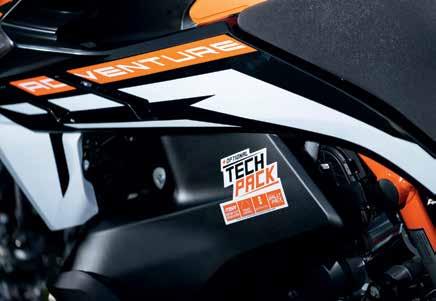
Cooling: Liquid-cooled with water/oil heat exchanger
Clutch: Cable-operated PASC slipper clutch
Engine management/ignition: Bosch EMS with RBW
Traction control: MTC (lean-angle sensitive, three-mode + Rally, disengageable) CO2 (grams/km): 105g/km
Fuel consumption: 4.5 litres per 100km
Frame: Chromium-molybdenum-steel using the engine as a stressed element, powder coated
Subframe: Chromium-molybdenum-steel trellis, powder coated
Handlebar: Aluminium, tapered, Ø28mm/22mm
Front suspension: WP XPLOR 48
Adjustability: Compression, rebound and preload
Rear suspension: WP XPLOR monoshock with PDS
Adjustability: Compression (high and low speed), rebound and hydraulic preload
Suspension travel front/rear: 240mm/240mm
Front brake: Two radially mounted, four-piston-caliper brake discs. Ø320mm
Rear brake: Two-piston floating calliper brake disc. Ø260mm
ABS: Bosch 9.1MP (uncluding cornering ABS and off-road mode, disengageable)
Wheels front/rear: Spoked wheels with aluminium rims. 2.50 x 21”/4.50 x 18”
Tyres front rear: 90/90-21” 150/70-18”
Chain: X-ring 520
Silencer: Stainless-steel primary and secondary silencer
Steering-head angle: 63.7º
Trail: 110.4mm
Wheelbase: 1528mm +/-15mm
Ground clearance: 263mm
Seat height: 880mm
Dry weight: Approximately 196kg
Tank capacity: Approximately 20 litres/three-litre reserve
Service intervals: 15,000km
u u

Still the same
Was there anything we didn’t like about the 890?
The only aspect of the bike which made us stop and wonder was the air-intake path being the same as the 790. We know owners who went to considerable lengths to seal the area under the seat because the rear wheel throws up dust which finds its way into air-intake tract which begins there and clogs filters in a hurry.
We don’t know if the underseat space is better sealed than the 790, so, as we said, it made us stop and think about that.
Ridin’ it
This is the tough part: trying to explain just how good it felt riding this bike.
It’s really something special. Getting a bit feisty on a winding road, slouching down and humming a few tunes on the freeway or, best of all, cutting loose on the dirt, the 890 is truly exceptional. The motor and electronics combine to make even the most tentative rider feel awesome, and competent riders will be able to grab the bike by the scruff of the neck and carve their way through the most seriously confronting terrain with
no trouble at all. The 880mm seat height and the weight feeling as though it’s carried low on the bike means most riders won’t be tottering around on tiptoe trying to stay upright, and the ergos, without any adjustment from us, felt there was plenty of room to stand, move or plonk onto the seat in comfort.
Trusting the suspension and hurling the bike into a sticky situation will leave a rider smiling, and any stretch of open dirt road will disappear in a shower of roost and irresponsible behaviour.
It’s just that good.
Above: It’s tough to explain just how good it felt riding the 890 Adventure R.
Below: The motor doesn’t feel bigger for its increased capacity. It’s torquey, smooth and lugs well at low revs.





1.2mm Forged
Aluminium body
Integrated carry handle
Flush mounted
locking system
Stainless steel fittings


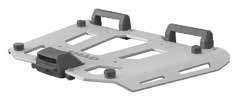

10 things to think about
About to part with a big chunk of legal tender for a bike? Here’s 10 things which should figure in the purchasing decision.
The amount available to spend will probably be the biggest factor in most riders deciding which bike they’ll buy.
If it’s to be a new bike, make sure to check up on warranty time and service costs. Some brands will only honour a warranty if the bike is serviced by an authorised dealer using OEM parts, and that can be frighteningly expensive. Voiding the warranty by using aftermarket parts or an unauthorised workshop can be even scarier expense-wise.
A secondhand bike in good nick can mean substantial savings on the purchase price, but the buyer needs to be prepared for possible problems. If you’re not confident assessing a bike’s value yourself, get a mechanic to go over it and give you an appraisal. Factor the recommended repairs into the budget before shaking hands on the sale.
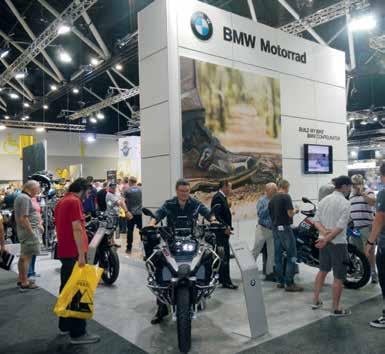
forums and internet sites can be great for getting an overall feel for opinions on bikes and how they perform, but the reader needs to be sensible and careful. Opinions offered for free are generally worth what they cost, especially opinions from other countries and riders who know nothing about you and the way you ride. A bike might be great on the autobahns and autostradas of Europe, just like all those keyboard warriors said, but it might be totally unsuited for the dust and heat of The Flinders or Gibb River Road.
Engine size doesn’t deserve the importance many riders assign to it.
Very few riders truly need, or can use, the power offered by a modern, multicylinder, big-bore motor.
Still, there are lots of advantages in having plenty of grunt, including, usually, big bikes mean big comfort.
Smaller motors mean lighter bikes, and that can be a huge plus, especially on tough, technical days, but riders will have to work harder to wring performance from a tiddler. The thing is, a lot of adventure riders aren’t too worried about true ‘performance’. If a bike can sit comfortably on legal speed limits while carrying enough luggage for an overnighter, many riders will be happy. Is it really worth the higher cost of maintaining a big bike when one with half the horsepower – and often with half the purchase price – will do the job?


Both singles and twins are good in the right circumstance.
If the intention is to cover lots of distance with not a lot of technical riding, then a big twin can be an excellent choice. If the bike will do a bit of trail riding, some touring, and maybe even commuting, a smallercapacity single will probably be a better option in the long run.

Opinions from people who ride the same terrain as you, especially people within your group who know you and how you ride, are far more valuable. And the more of the same bike in a riding group, the more spares and tools can be shared around with less for each to carry. Tech tips and advice will be plentiful as well.
If someone in your group has a problem with a particular bike, chances are you should be very wary of buying that bike yourself.
Local knowledge is best.

This one will probably come down to budget more than anything. Everyone would love to buy a new bike every time. In general, if that option’s there, we recommend it.
Buy new if you can.
If a new bike is out of the question, a good secondhand bike can be great, especially if it’s been set up with a few of the things you’re chasing, like luggage and crash protection.
The dream ideal – almost a fantasy – is to buy a bike from someone you know who’s been careful about maintenance and service, and who’s had no trouble with that bike.
After that, secondhand can be a bit of a minefield, but with common sense it can be a viable option. Give the bike a good going
over: bearings, oil, airfilter, tyres, service history and everything else you can think of. Get a mechanic to check compression and any other common faults or weaknesses in the model. Ask the owner to talk about the bike and see if you can get a feeling for how well it’s been looked after.
When you’re reasonably satisfied the bike hasn’t been abused or dunked in saltwater, cross your fingers and hand over the cash.

Alot of riders are happy to do simple service items themselves, especially oil and tyre changes and airfilter maintenance. When you’re thinking of buying a particular bike, make sure to find out if that’s practicable. Again, don’t put any faith in websites. Ask around your riding group and the local dealer. The dealer wants your business, so you’ll need to listen carefully and interpret what’s being said, but in a lot of cases the electronics on modern, high-tech bikes make it impractical for anyone but a trained tech with specific equipment to work on the bike. Airfilter maintenance on a lot of fuel-injected bikes is a nightmare.
Find out about those things before buying. They may need to be factored into the budget, or at the very least, taken into account when planning a ride. u
Buying a bike is one thing. Maintaining it properly is another. With a new bike, make sure to ask about service intervals and the cost of servicing. There are plenty of adventure bikes around with service intervals of 10,000km or more, and that’s what an adventure rider should be looking for. There was one model offered recently as an adventure mount and the manufacturer stipulated oil changes every 1000km. That would be every second day, or maybe every single day, on plenty of rides.
Another thing to check up on is the cost of replacement parts like brake pads, pedals and levers. The cost of those things, especially on some European brands, can be downright staggering.

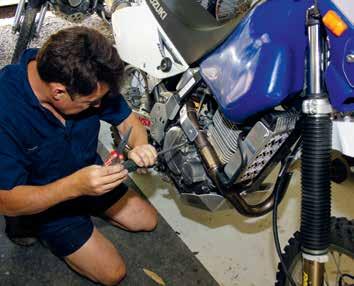

Getting a rider’s feet on the ground is far more important than many buyers realise. Adventure bikes tend to be big and heavy. Over 200kg loaded is very common. A bike that size falling has far more serious consequences than for trail and enduro bikes with half the weight. Everything depends on the size of the rider of course, but a seat height of more than 850mm needs to be looked at carefully. In rocky river crossings, mud, ruts and lots of other situations, getting both feet on the ground can be a lifesaver. When things get tough, the
‘survival’ position – legs out straight with both feet on the ground and fists clenched in a death grip on the ’bars, eyes firmly squinted and prayers muttered through clenched teeth – is sometimes the only way through a nasty section. If the seat height won’t allow the rider to get their feet on the deck, things can get ugly very quickly and very often.
Lowering links on the rear suspension can help, but need to be fitted by someone who knows what they’re doing. Dropping the arse of a bike 25mm or more can do terrible things to its handling and suspension action. Get good tech advice if lowering links are part of your plan.

This is a huge topic and we’re not even going to try and cover it here.
Although there are plenty of bikes sold as ‘adventure bikes’, the chances of the springs being the correct weight to suit an individual are very slim. And if they are, some luggage and extra fuel will soon send that measurement to the crapper. The electronic suspension on current models is a good option for riders who don’t know, or don’t want to know, about setting and tuning
Being able to get spare parts quickly – and being able to fit them – is a big issue for the hard-core adventure riders, and it’s an aspect of ownership which gains huge marks for bikes like the DR and KLR. The models have been around for so long, and have had so few changes, parts are pretty much always available, even if it means chancing secondhand. A rider stuck in a tiny settlement in the middle of WA can reasonably expect to have parts for those bikes freighted in within a few days, and the repair can be managed with a good tool kit and some basic knowledge.
That’s not the case with complex, high-performance bikes. A breakdown on a bike relying on electronics will usually mean a trailer or truck recovery, and often authorised dealers will still have to order specific software or hardware.
Lord help anyone who hears the dreaded word ‘backorder’ in that case. Of course, modern bikes are incredibly reliable and dealer networks are good within cooee of the Aussie coast and capital cities, so riders not heading to isolated destinations probably don’t need to give the availability of spares so much consideration.

suspension. For everyone else, budgeting to have suspension professionally tuned, and then learning how to adjust preload on the rear, will pay huge dividends. It may seem expensive when the tech names the price, but it’ll be worth every cent – and more – on the corrugations and ruts of every ride.

We’ve
already pointed out the pitfalls of advice from web forums and keyboard wannabes. If you’re really chasing sensible, reliable assessments of bikes and products for use by Aussie riders and Aussie conditions, there’s really only one place to look. Adventure Rider Magazine, of course. See you out there.


Get ready to discover the fourth Multistrada generation. Sportier and more touring, stronger for off-road use and easier in the urban environment. Lightweight and compact, with the new 170 HP V4 Granturismo engine for a sporty and exciting ride on mixed terrains. Ready for long journeys thanks to the navigation-system that can be viewed on the dashboard and the innovative rider assistance radar-system, it will offer you excellent riding comfort and a main service-interval after 60.000 km. And when the asphalt ends the fun will continue thanks to the high ground clearance, the electronic suspension, the surprisingly fluid power delivery and the perfect ergonomics for stand-up riding. After your adventures you will feel great ease and control in daily use thanks to the advanced electronic ride assist systems and the ability to adjust the seat down to 810 mm in height.
New Ducati Multistrada V4: ruling all roads has never been easier.
Discover the MY21 Ducati Range at ducati.com/au

Rod Taylor and mate David Tiller tackled a tough desert road. In the first instalment of this story they made their way to the start.
“Ldo The Tanami,” he said.
Maybe it was my blank look, because then he added, “You know, the big deserty thing, northwest from Alice. Dry, not much rain.” Note, that’s a plot point.
Anyone who’s done that road will know ‘dry’ has multiple meanings. That’s ‘dry’, as in no fuel, and worse, no pubs. And usually, no water (another hint).
Getting across the 1055km from Halls Creek to Alice Springs along The Tanami Track means riding 600km from the little community of Bililuna to Yuendumu carrying everything you need. If you run out of food, you may have


to eat the weakest member of your party. David could squeeze nearly 400km from his 1200GS, but on my Triumph XC800 with a standard tank I might do 350km, though I usually budget for 300km. To get us the distance, we bought three 12 litre fuel bladders and a couple of six-litre water bladders. Since a litre of water
Top: While it was only knee deep, it was fairly wide. Above: It would’ve only needed an unseen boulder to knock the front wheel out and that would be it.
Left: “Let’s do The Tanami,” he said.
weighs a kilogram (and petrol is similar), that already meant 18kg for me and 30kg for David on top of already heavily laden bikes. All up, we’d be wobbling across the countryside on bikes weighing over 280kg.
To make it more complicated, we’d have only four weeks to do the loop, with David starting from near Kyneton, Victoria, and me from Canberra. Just getting to the action would be a long week’s ride, so we decided to freight the bikes to Darwin and fly up. From there, we’d ride down to Katherine towards the Gibb River Road, then to Broome and down The Tanami.
Screen test
I’m not good with early starts, but I managed to drag my sorry arse out of bed for the flight to Darwin. The bikes were already there and ready to go, but it hadn’t been without a few dramas. David sent me video from his garage, saying, “Here’s a space that should be full of bike.”
No bike. Instead, it was at the shop getting the ABS fixed. Not to be outdone, propped my bike on the back lawn to do some filming then went inside. I heard, ‘scrunch’. Insert list of vile expletives here. The bike had toppled over on the soft ground, cracking the windshield in half.
Shit.
Luckily the replacement arrived the night before the courier collected the bike. With David’s brakes fixed too, we were ready to rock n’ roll.
One of the joys of bikes is you can always strike up a conversation with another rider. Sitting on the plane and digging sleep from my eyes, one of the cabin crew noticed my bike helmet. For a few minutes we were all yackity yack, bikes, bikes, blah, blah, until he decided he’d better get back to work. A moment later he reappeared clutching a bag of goodies. He’d liberated a coupleof-dozen little bottles of spirits to fortify our journey. Cool! After landing, we found the bike-storage place was the back of
u



someone’s house. I kicked the sand in the driveway and muttered, “Soft.”
Yes indeed. Bring it on. With bikes sorted we were at last on the road, opening up more opportunities for drama. In Katherine I was cranky because my phone SIM card wasn’t working, so I gave the rear Hidenau a fistful. I don’t usually do that kind of thing but the ‘BRRRWAAA’ as the back let go was satisfying, even it was antisocial. I’d fitted the hardwearing tyre for distance rather than traction and indeed, it did the entire trip and then some. And for the most part, it had enough grip to get me through some fairly grungy tracks.
The landscape across much of the Kimberleys is low and scrubby with thousands of termite mounds. Apparently, it’s a thing to put T-shirts over the top of them.
At first it was a novelty, but eventually it wore off and I couldn’t help wondering if it bothered the termites.
To my city-dweller eyes, the country was stunningly beautiful, though harsh and unforgiving. My dinner came either pre-cooked or wrapped in plastic from the supermarket, and if you’d plonked one of us there we wouldn’t have lasted long. But aboriginal people did just fine for maybe 65,000 years. It’s a remarkable achievement for people we once labelled ‘primitive’ and belies their extraordinary sophistication. didn’t know at the time that I would soon be writing a book that touched on that theme. To survive they developed an intimate understanding of the land, the plants and the animals.
They say there isn’t four seasons, there’s thirteen. For bikers, there’s really only two: wet and dry. There’s a season you can ride and one you shouldn’t.
Another joy of riding is the unexpected sights, sometimes attractive, sometimes not. David


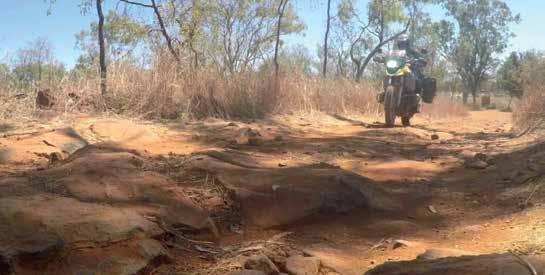

and I winced when we saw a ludicrously overloaded 4WD with its front wheels barely touching the ground towing a caravan. Imagine meeting that bozo understeering towards you around a loose corner?
Dotted along the highway at regular intervals was the roadside furniture –cows. Not live ones, but ones that had been barrelled by trucks. Their tanned hides and grisly expressions hinted at their final thoughts: ‘Who’s this bloody drongo coming towards me in the overloaded 4WD?’
The ride to Kununurra was pleasant, easy tar. We paused there for R&R and some supplies and the fun began soon after. For us that meant attempting to reach the El Questro campground and our first river crossing.
While it was only knee deep, it was fairly wide and we couldn’t see the bottom. Dumping it in the middle would’ve left us trying to pick up heavy bikes packed with gear. It would’ve only needed an unseen boulder to knock the front wheel out and that would be it. We did a quick risk analysis of likelihood vs consequences and decided that, while we could almost certainly do it, it wasn’t worth it.
Cowed and defeated we headed to Wyndham for a night in the pub. Oh the shame – rubbed in by a shopping-trolley city van that bumped its way across without fuss.
No matter, we were dry, and I later heard the campground was becoming too popular in peak season. Besides, there were plenty more adventures ahead, including a crossing we couldn’t avoid…dramatic music…the Pentecost River.
It could supposedly be wide, deep and rocky, with crocodiles waiting for clumsy riders.
Riding country like that on a bike was far better than travelling in a dull old tintop with comfy seats and plenty of room. On a bike you get a more intimate connection with the landscape. You can feel it, you can smell it and, if you fall, touch it. What you can miss in either case, however, can be a sense of the history. On this trip I was only dimly aware of the deep cultural significance of








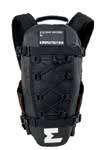

the Kimberley region. It wasn’t until I began researching my book I learned some of the darker parts of our history.
One episode involved the killing of a pastoralist, leading to mounted police hunting down maybe 30 aborigines around Forrest River northwest of Wyndham. The troops had probably been brutalised by their involvement in the Boer War and their violent reprisal was no doubt a reflection of that. Still, there was a positive side which I learned in writing Kate Auty’s story. As a small girl in the local school, she and her brother had the teacher sacked after he mistreated one of the aboriginal kids. He was shipped out on the next flight to Perth. From there, Kate went on to serve on the Aboriginal Deaths In Custody Royal Commission and remains a stalwart advocate for their cause.
The Pentecost River crossing proved to be an anticlimax. No raging torrent. No prangs. No crocodiles.
From there, Gibb River Road wasn’t particularly difficult, although there were enough grungy patches to keep us alert. We’d rate it three out of five on our scientifically calibrated Pucker Factor scale.
Along the way were numerous beautiful gorges and sidetracks that made this region ever more (over) popular. In peak season it’s becoming crowded with 4WDs and the occasional bikes. We opted out of the road up to Mitchell Falls as it was too far and the corrugations where horrendous. Our bikes were holding up well under difficult circumstances until mine hit what would otherwise be a minor mechanical flaw. Yep, of all the dumb things, the sidestand return spring popped off. And as it went, it ripped off the big foot plate I’d engineered to stop the bike sinking into the soft stuff.
Farrrk. Imagine: miles from nowhere, the sidestand would flop down. That meant I needed a piece of cord to hold it up. Parking the bike involved finding a sufficiently firm patch of ground, then manoeuvring the heavy bike. Without its spring I needed to push the sidestand forward into position. It made a recipe for lots of
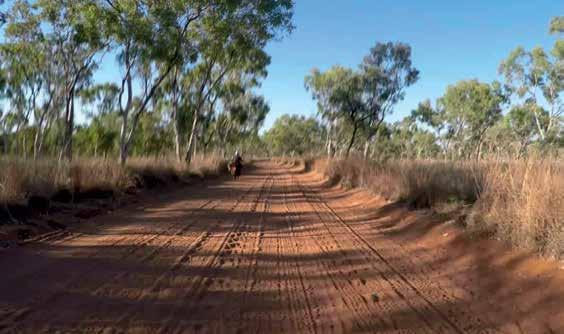


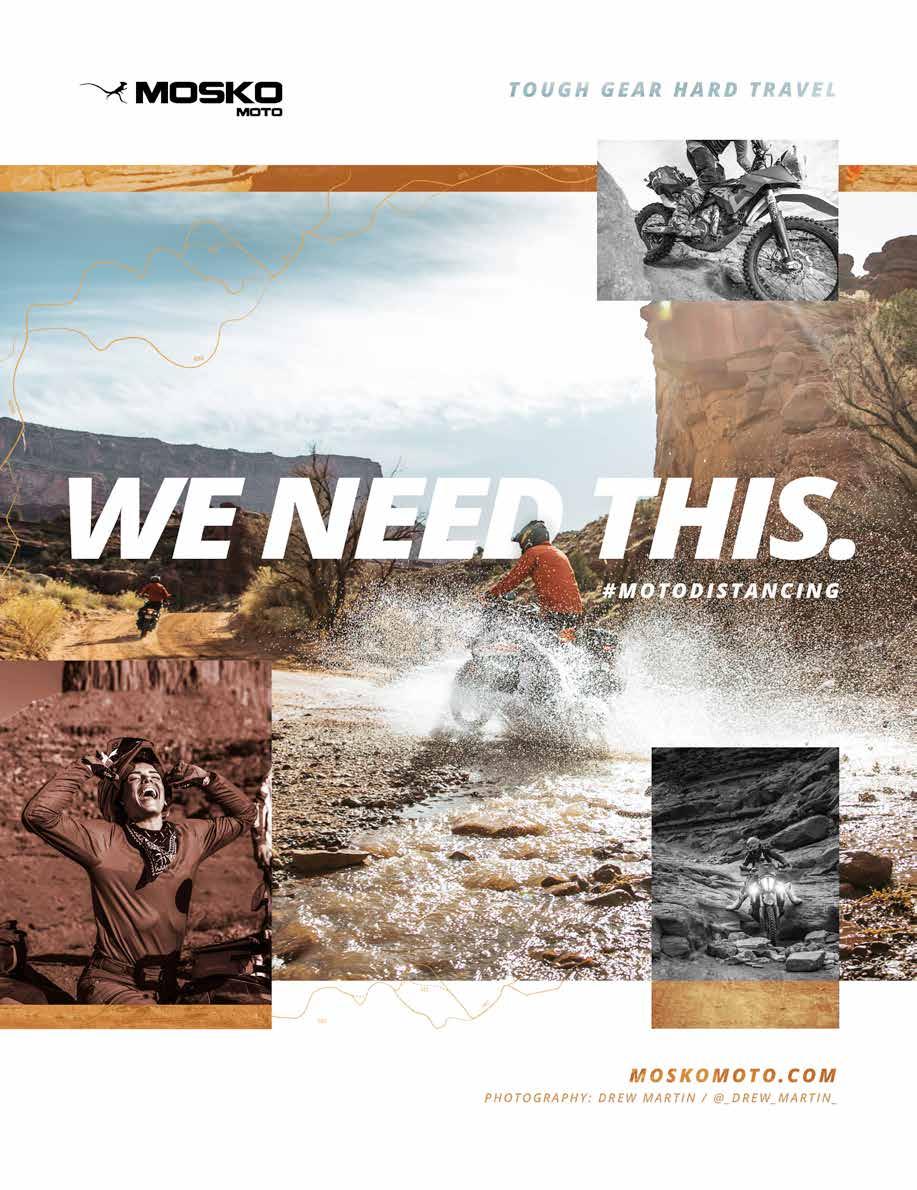
toppling-over, laughing, and pickingup behaviour and more foul language. Probably without the laughing.
Two things saved me however: 1) I found the spring before riding off; and 2) Karl at Over The Range repair shop, just down the road past Mt Barnett, did a classic bush-mechanic job for me, and even gave us some beers. Champion!
The next stopover was the Australian Wildlife Conservancy at Mornington Station where they serve a flash dinner. David got up with the farting sparrows to score a Gouldian Finch while I guarded my sleeping bag.
The next morning we were packed and ready to go when David noticed his front tyre had gone flat. We couldn’t find any holes, so it appeared the tubeless tyre had leaked around the rim. After pushing a bit of air into it we were off to Bell Gorge, a few more river crossings, and another glorious swimming spot.
Yes or no?
The next day we headed off to Derby, with a brief stop to patch my front tyre. It was hot and uncomfortable by the roadside and, without a centrestand, we had to prop my bike up with a lump of wood.
When we hit Broome we were faced with a big decision. It was our final chance to make a go or no-go call on the Tanami leg. We were concerned about our fuel reserves because we were approaching the limits of what we could carry. Worse perhaps, was we didn’t know what road conditions to expect. It’s a long, lonely road, and if the track was really bad, we’d be in trouble.
We seriously considered bailing and heading south instead across the Nullarbor.
We could’ve done that, but I’m glad we didn’t.
Nobody lives forever lads. Let’s go. It was time to hit the Tanami.




For more stories, Rod Taylor’s book Ten Journeys on a Fragile Planet is published by Odyssey. Readers can also search ‘todo larry Kimberley’ on Youtube for more of Rod’s adventures.










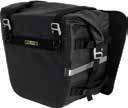















what you’ve got
The word ‘adventure’ is used to describe many types of bikes. How else could you explain a WR250R and 1250GS both being marketed as adventure weapons?
See what I mean? It’s a broad concept. In fact, the word adventure means many things to different people. The Oxford dictionary says adventure means ‘…an unusual, exciting or dangerous experience, journey or series of events’. Based on that definition, an adventure could be construed as taking toddlerage children to the supermarket. Actually, come to think of it, it’s an adventure taking young children anywhere.
Point of view
If we bring the association of the word ‘adventure’ back to how we use it for bikes, the subject is large and covers


a lot of grey areas.
A recent outing I would’ve described as adventure riding, another rider thought was enduro riding. Neither of us were wrong, it was just our perception of what different types of riding were. The more I ride the more I’m convinced there isn’t any one type or genre of bike which solely represents adventure riding. In keyboard-warrior land – some may call it ‘social media’ – I regularly see comments within adventure-riding groups that read something like, ‘It’s not designed for that kind of riding’, or, ‘No wonder you dropped it. Your bike wasn’t meant to be ridden there’. Then there’s the much-abused favourite, ‘That’s a shit bike for that kind of riding. Why don’t you buy a proper adventure bike?’
When I read comments like those I often wonder, ‘What’s a proper adventure bike anyway?’
When I purchased my first bike, a Suzuki DRZ400, I didn’t know what kind of riding I wanted to do. I knew for sure it was going to be off-road, but not whether it would be long adventure trips or tough enduro on gnarly tracks. As it turned out I loved both types of riding and I was told many times my DRZ wasn’t suited to either.
When I decided I was going to ride that bike self-supported to Uluru on a 21-day, 7300km trip, some people thought I was mad. I was told it wasn’t designed for all those kilometres and that the DRZ was basically a farm bike.
I rate optimism very highly, so when a consistent negative mantra of opinions came my way I turned every negative into a positive or found a solution.
“It won’t be very comfortable,” I was warned. “The DRZ seat is hard as concrete.”
“No problems,” I replied. “I bought an Airhawk.”
Or, “The DRZ will rev its tits off the whole way and vibrate the fillings from your teeth.”
“No worries. I’ve changed the gearing so it’ll sit on 100kph comfortably.”
As it turned out, the Suzuki – fully loaded, I might add – allowed me to ride many rough, off-the-beaten-track routes which most people on larger bikes would happily have given a miss.
In my opinion you can turn just about any bike into an adventure bike, and that brings me to this theory: an adventure can be created by the bike you ride or by riding through terrain which provides, as the Oxford dictionary explained, ‘…an unusual, exciting or dangerous experience, journey or series of events’. Choose a bike
Designs born from a life on the road.

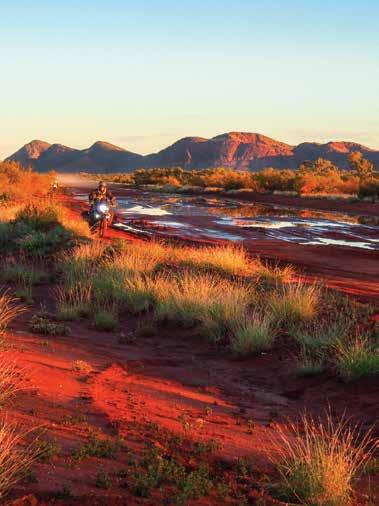

which makes a regular ride more difficult and you’ve created an adventure. Choose a ride that takes you out of your comfort zone and you’ve created an adventure. The adventure happens because of any number of circumstances, not because the bike you purchased was marketed in the adventure category.
Back in 2003 a group of friends rode their supposedly ill-equipped bikes to Cape York and back. The selection included a BMW R1100GS, a Honda NX650 and – wait for it – a Suzuki GSXR1100. Each bike took a different route to Queensland. The BMW and Suzuki were ridden from Ballarat in Victoria. The Honda was shipped, and with only a few modifications, including stiffened suspension and knobby tyres, the GSXR made it all the way to the top and wasn’t dropped once in any river crossing. It was the only bike to achieve that feat.
Remember this was back in 2003, before Ewan McGregor and Charlie Boorman supposedly introduced adventure riding to the world. The terrain was rough and the Old Telegraph Track was not nearly as congested as it is today.
An adventure is what you make it and it can be on any bike. I know for marketing purposes we need to categorise bikes into pigeonholes like off-road, dirt, cruiser,

If you’ve ever had the pleasure of visiting Vietnam, Malaysia, Cambodia or Indonesia, you’d have a broad appreciation of just what a bike can be used for. While I’m not condoning the bike as a way of transporting your whole family of four kids and your wife, believe me, it can be done. I’ve seen it. And who needs a ute when you have a Honda 125 to carry your 100-odd ducks to the morning market? Those guys are adventurous and they’re just trying to make a living. They are, in essence, the perfect example of making do with what you’ve got.
Below left: What’s a proper adventure bike anyway? A 1965 600cc BMW at the National
Below right: If you’ve ever visited Asia you’ll have a broad appreciation of just what a bike can be used for.
dualsport and so forth, but really, if you think you need a purposely designed adventure bike to have an adventure, you don’t really understand what adventure means. Look at the popularity of the humble Postie bike. Have you seen some of the trips people have endured on those? Talk about adventure!

Think about it
Next time you hear or read a comment about a bike not being made for adventure, think about what I’ve written here and have a chuckle to yourself. Then reach deep inside for that seldomused part of the brain where your maturity mechanism is kept and reply, “That all depends on what you mean by adventure.” Then be happy in the thought you’re much wiser for rising above such narrow-mindedness and spend some time splashing around in the outside-the-box pool of thought. Ride safe, ride well and ride often.
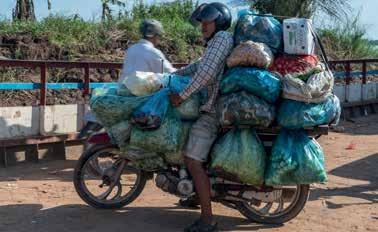

Riding in Victoria is good at any time. Graeme Sedgwick and a few mates enjoyed an early-winter run through the state’s west and discovered one of their group had some interesting history.
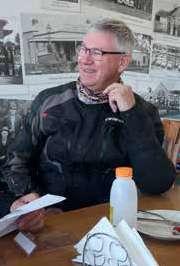

joined some like-minded characters – Wayne and Steve who were planning a Flinders Ranges ride, and Grant and Alistair who enjoy the high country – for a three-day tour that meandered between the Otway Ranges south of the Princes Highway via Wormbete, Yaugher, Yeodene, Barongarook, Irrewillipe, Simpson and on to Cobden. It dished up plenty of the swervery motorcycles are built for and was topped off with a charge northward from Noorat to overnight in Lake Bolac.
Bolac royalty
The pub’s barmaid at Bolac reckoned its menu was a reflection of the ‘kingdom’ of fine food and laughter at the hotel, and she wasn’t far off the mark. Bolac pub’s dining room was fit for a sovereign, serving cold beers complemented by meal plates that brimmed with good food.
We spent the following day chasing our front tyres up, over

and around The Grampians: Wannon, Mt Burchell, Victoria Point, Cadden’s Flat, Rocklands Reservoir, Telangatuk, Mockinya, Wartook and Mt Victory, before riding Silverband Road’s one-way charge which was only accessible from the north.
The Grampians National Park – compared to years long gone when one could almost aimlessly ride or drive just about anywhere and everywhere –remains a cracker. Covering more than 1600 square kilometres and loaded with options if one’s prepared to invest in some selective navigation, riders can enjoy any number of sealed and unsealed choices.
The region’s punctuated by little villages that boast appetising country-food fare within peaceful surroundings, and the scrub country around Rocklands Reservoir, west of The Grampians, presents another area worthy of exploration.
Built in the 1950s, Rockland’s Reservoir boasts a whopping 67.5 square kilometres that’s been created by a major, ungated, concrete-walled gravity dam with embankment sections across the Glenelg River in the Wimmera region of
Above: A three-day tour that meandered between the Otway Ranges south of the Princes Highway and included a run along The Great Ocean Road. u


Victoria. It’s the largest reservoir within the Grampians-Wimmera-Mallee water-supply system, and within easy travel time of Horsham.
Wayne’s competence as a rider is something I’d be more likely to dream about than emulate, and it’s in part due to his father’s guidance from almost as soon as Wayne was big enough to ride. Wayne’s father, Alf Berry, was a Horsham resident and we stopped in for a visit. Alf turned out to be a very interesting bloke.
Race relations
The story of Alf Berry and his employer was a fascinating insight into earlier times. Some decades ago, Norman Osborne, who knew of Alf Berry’s mechanical talent and better-than-average off-road riding ability, invited Alf to be workshop foreman of what became Geelong’s number-one motorcycle shop of the era, Pratt And Osborne Motocycles.
Osborne’s business partner, Frank Pratt, had a brother who’d bought a World War Two aircraft and decided to ship it from Egypt back to New Zealand via Melbourne. When he found himself
Below
Below

cycle adventures. His most famous and longest-running event was a tough-asnails riding adventure called a ‘reliability trial’. Designed to test rider and bike to the limit, it traversed barely navigable tracts of ground against the clock and served up a cocktail of rock, mud, sand and any number of abrupt shallow- and deep-water hazards guaranteed to drown riders and their bikes.
caught up in a dock strike in Melbourne he decided to do some flying to fill the situation’s otherwise dead time, and it opened his eyes and mind toward Victorian possibilities.
Impressed with what he saw, he promptly talked his brother Frank into relocating from New Zealand. Frank happened to be a better-than-average rider – good enough to win a couple of GP titles in both a sidecar outfit and on a 250cc at Phillip Island and Lobethal, South Australia. He also drove a BMW sedan to victory in the Australian Grand Prix around Victoria’s once-upon-a-time Point Cook racetrack on the outskirts of Melbourne.
Frank liked the idea of creating motor-

Pratt’s early reliability trials ran through an area north of Geelong that today is more generally referred to as The Brisbane Ranges and was a screaming success. The only problem was the event’s location in and around Anakie and Steiglitz. The course wasn’t hard enough and Frank had to reluctantly hand out more prizes than he’d intended.
Pratt relocated his reliability trials into the Otway Ranges during the wettest time of the year and the decision was a hit, with even more riders keen to participate. The ride became known as the Otway Reliability Trial, and Alf Berry, father of riding mate Wayne, won no less than 16 times.


Alf’s adventures and storytelling added a big dimension to coffee breaks and broader evening chats about what bike would best complement the hunger and drive to do rides like the reliability trials, or even bigger rides where riders weren’t sure where to start or where to go.
Loaded with ideas, the third day’s return trip headed southward to the familiar western edge of the Otway Ranges, close to the coast, following whoever happened to seize the lead. It was a run that included more zig than zag toward Timboon, then much the same to Port Campbell, blending an almost never-slackening mix of corners linked by quick runs in between. The route dipped and arced with lefts and rights that disappeared between forest plantations that crawled over and up terrain littered with tight, tightening, and open, fast corners.
The roads became one of the state’s most inspiring riding destinations. Our chosen route was flanked by the Great Ocean Road and any number of Otway Ranges trails that would’ve been part of the Otway Reliability Trials 30 or more years ago.
As our day wound down we found ourselves on faster runs from Lavers Hill to Weeaproinah, Ferguson to Gellibrand, Turtons Pass, Wild Dog and Skenes Creek’s secondary roads and along the Great Ocean Road.
There’s something therapeutic about feeling salt spray on your face and visor as you dart high above or close beside the breaking waves along the windswept stretches of stunning Victorian coastline. In places the sea batters against cliffs which rise 100 metres or so to the road.
The great coastal charge from Skenes around Cape Patton, through Kennett and Wye River to Mount Defiance then The Spit before rounding the Pacific Hotel and buttoning off into Lorne was an absolute hoot, and a perfect conclusion to what amounted to 1100km of riding.
The riding was complemented by enlightening and inspiring storytelling about adventurous men called Pratt and Berry whose lives were loaded with motorcycle distraction.
The few days were best summed up when Wayne questioned his father’s late arrival at his 80th birthday celebrations.
“Hey, Dad,” he asked. “Where have you been?”
To which his father Alf replied, “I’ve been for a ride to see if I can still do 100mph.”









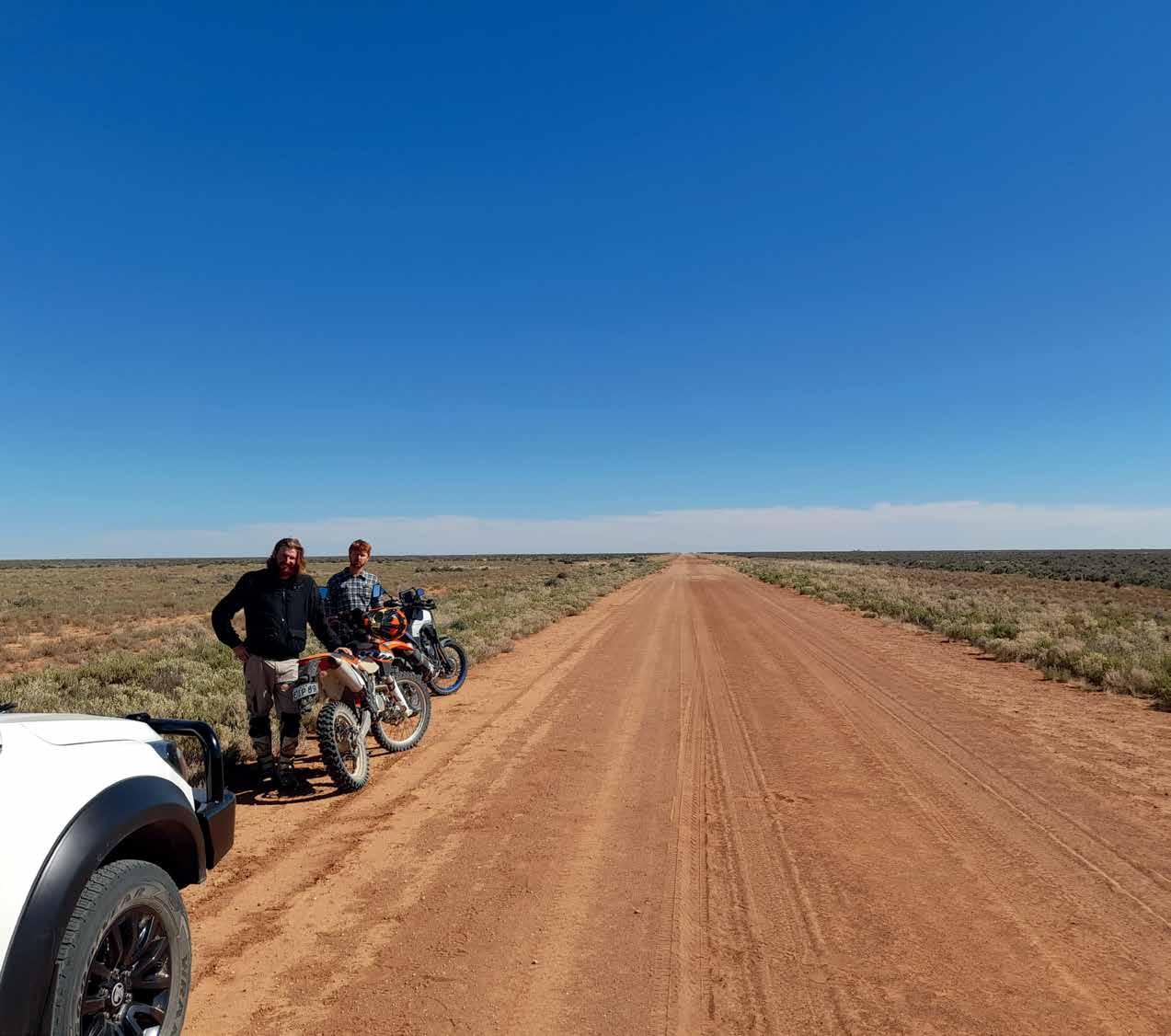
Mindful of Banjo Paterson’s opinion of the town, Mark Fosdick bypassed Booligal in southwestern NSW and set about exploring the general area. He found it filled with colonial history, amazing outback sights and some great riding.
The plan was to meet my two sons, Will and Mitchell, at One Tree, just north of Hay, NSW, then take three days to ride around the state’s southwest. Will was between bikes at the time, so provided the support vehicle and carried essentials such as extra fuel and a fridge. Mitchell had a KTM 350 which hadn’t seen a public road before this trip and required refitting the blinkers and numberplate. The bike wasn’t exactly made for touring, but young blokes are tough.
Pooncarie pub
The intention for the first day was to head northwest from
u

Main: There’s not many twisties on the Corrong-Clare road. Above: A remarkable diversity of country and road conditions over 750km and three days.
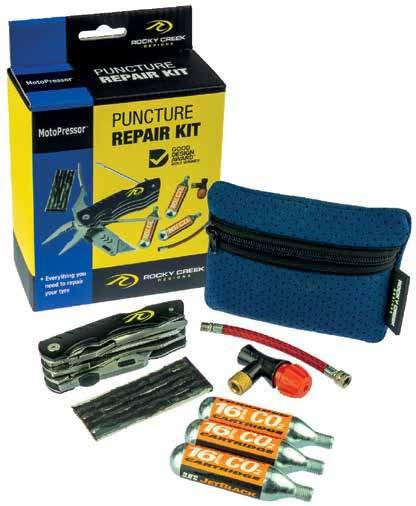
Available from Rocky Creek Designs or all good motorcycle stores through Pro-Accessories

Everything you will need to get you out of trouble if you get a puncture.
This kit contains our award winning MotoPressor Puncture Repair Tool, 5 pre-glued vulcanized repair strings, an inflation tool and 3 x 16g CO2 canisters and a neoprene bag. The bag with its contents, will take up a small amount of room in your pannier or pocket.
The size of the bag containing the kit is only 13.5cm wide x 10.5cm high x 4cm depth and weighs just 582g.

One Tree across to Pooncarie via Corrong, Clare and Gol Gol. One of the rare sections of bitumen on Corrong Road will be used for some scenes in the next Mad Max movie, due to be shot in mid 2021. Road surfaces and conditions varied quite a lot. While there were some sections of formed gravel, the majority of roads were graded natural soil, mostly loamy clay, but the last 50km or so into Pooncarie was sandy. Low sand dunes interspersed with clay flats made for interesting riding. The young bloke on his KTM loved it, while I, on my new Ténéré 700, was a little nervous at times. Still, we stayed upright and arrived at the Telegraph Hotel in Pooncarie tired but smiling.
Pooncarie Hotel is a popular place for both locals and travellers. It has everything expected in a bush pub – relaxed atmosphere, secure parking for bikes, good food, good rooms and cold beer.
The next morning we rode southeast to Mungo National Park.
Mungo NP lies within the Willandra Lakes Region World Heritage Area, home to the Barkindji, Mutthi Mutthi and Ngyiampaa people. The landscape there is dominated by large, dry lakes rimmed with eroding sand hills known as lunettes. The park is famous for the discoveries of Mungo Man and Mungo Lady, the oldest remains of cremated human beings in the world, and the ‘Trackways’, 20,000year-old tracks of some of the people who lived there when the lakes were full and food plentiful.
Mungo also has a rich European heritage. The woolshed, built in 1880, has been lovingly restored and is a must to visit.
The park visitor centre has lots of useful information and you can organise guided tours which interpret the rich natural and cultural heritage of the area.
From Mungo we headed southeast to Balranald via Penarie to top up our supplies before camping at nearby Yanga National Park.
Yanga was a revelation. I knew very
little about the place before arriving and was blown away. The old homestead is situated on a point jutting out into the massive lake which was about half full when we were there. The lake, fed from the Murrumbidgee River, is home to thousands of waterbirds when it has some water and is a spectacular site. The homestead and garden have been beautifully restored and are a must-see for anyone interested in old rural buildings or pastoral history.
The next morning we headed across the Low Bidgee floodplain to Maude via Nap Nap.
We were pleasantly surprised at the amount of water in the channels, with some spreading out across sections of the floodplain. Before dams, the area would’ve seen some huge floods. Rain and snow from the Snowy Mountains and Southern Tablelands snaked its way down the Murrumbidgee River to spread out over a vast area of channels and wetlands when it reached the plains.


Flows are highly regulated these days and there must’ve been an environmental flow allocation to provide the water we saw that day. It seemed incongruous to be sending up clouds of dust as we rode through areas of flooded country. You can’t ride through Maude without stopping at the pub, even at 10.30am, and after a cold drink and a chat we completed our ride by heading across to One Tree.
Although this trip covered only 750km and three days, we saw a remarkable diversity of country and road conditions. From sand hills and lakes that have been dry for thousands of years, to floodplains with full lakes, flowing channels and thousands of waterbirds. Roads varied from gun-barrel-straight bitumen fit for apocalyptic movies to loose clay and red sand.
All within a day’s ride from Sydney, Melbourne or Adelaide.
Top left: One of the rare sections of bitumen on Corrong Road will be used in the next Mad Max movie.
Left: Sunset at Yanga Lake.
Above: Will and Mitchell in Mungo woolshed. Built in 1880, it has been lovingly restored and is a must to visit.
Below: Mitchell’s KTM 350 hadn’t seen a public road and required refitting of the blinkers and numberplate.
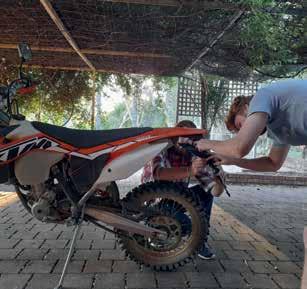












Remember that ad where the bloke liked the product so much he bought the company that made it? Meet Scott Stoodley and Bike Tour Asia.
As a regular traveller to Bangkok I’d often heard how much different the landscape and lifestyle was in the northern mountain regions of the Land Of Smiles. I had some time clear from work in 2018 and headed north to Chang Mai to do some exploring.
Motorcycle has always been my preferred mode of transport for checking out new places, and after some research on Google and Trip Advisor I contacted Bike Tour Asia. The team there was all about designing the most suitable experience by asking lots of questions. Things like:
v Riding experience?
v How many days?
v What size bike?
v Guided, or self-guided with our help?
On that occasion I was happy to travel alone, but as I had only four days free I preferred to have a basic route and accommodation planned to avoid boring roads and wasting time trying to find lodgings at the end of each day.
“No problems,” said BTA. “Tomorrow we’ll pick you up from your Chang Mai hotel and bring you to the BTA service centre. Your BMW F800GS will be ready to roll after a briefing on your route and GPS system.”
And that’s how it worked out. was presented with a detailed map (mine to keep), a booklet with printouts showing daily distances, optional stops and each night’s accommodation. All that info was also loaded into the bike’s GPS and I was given contact numbers for emergency services and BTA staff. The bike’s panniers contained tools for tyre repair, jump starting and other basics –none of which, thankfully, were needed.
It’s always good to be ready, just in case.
In what seemed like no time I was in traffic heading out from Chiang Mai and


after 30 minutes or so turned off the main road and headed north into Doi Inthanon National Park. It was certainly the change of scenery I’d been promised.
It is hard to believe the quality of the twisting roads through that mountainous region. They carve through the jungle but are mostly smooth, grippy, and well-marked, with countless sweeping curves. It had been explained to me the roads were constructed and maintained by the Thai military to provide quick access to all of Thailand’s northern

borders in the event of a conflict. I offered a big, silent thank you to the Thai army for that.
To change it up from time to time the BTA guys had added in some detours to take me off groomed roads through more remote village areas, plantations and so on. It was great to drop the riding pace for a while and really take in the green landscapes and peaceful feeling of the rural areas.
The accommodation booked for me would be near impossible for a rider to find on their own. They were mostly


what I would describe as jungle resorts, providing high-quality, clean and comfortable rooms while blending into the environment. Added to that was the genuine Thai hospitality, cold beers served at the pool and an endless choice of Thai cuisine.
A big thumbs up!
During the days there were lots of opportunities to stop and enjoy unique places: elephant camps, waterfalls, high-altitude lookouts, tea plantations, lakes and so on…I could please myself
as to where or how long I stopped, or even deviate from the formal route to investigate other roads and use the GPS to easily get to the next waypoint.
‘I’ll be back’
After rolling back into the BTA service centre I shared a few cold beers with the MD, Daniel Senicar, and the conversation soon became about partnering up to share this great experience with other Aussie riders. After a year and lots of exchanging ideas and plans I was proudly a partner of Bike Tour Asia and enjoying being included in the team.


Top left: Accommodation was mostly jungle resorts offering high-quality, clean and comfortable rooms while blending into the environment.
Above: The famous Golden Triangle which sits at the intersection of Myanmar, Thailand and Laos.
Below left: Pai’s Memorial Bridge was built in 1942 by the Japanese to transport weapons and provisions to Myanmar (Burma) during World War II.
Below: Doi Inthanon National Park was a change of scenery and included Thailand’s highest peak.


The first Aussie group we hosted was made up of some likely suspects who’d always proclaimed, “Yeah, I’d love to do that!”
While I knew they did really mean it, I also knew they’d struggle to actually make it happen.
With five seriously interested riders we set some dates and presented an allinclusive package of bikes, tour, Bangkok accomodation on arrival, welcome dinner, airport transfers, domestic flights to Chiang Mai and travel insurance –all done.
There was no more room for excuses from those lads. It was time to go do it!
A Bangkok teppanyaki restaurant I’d come to know very well over the years was a great location to kick off our tour. We chatted about the adventure ahead over great food and, as the flight to Chiang Mai the next morning was at 8.00am, we all decided to have an early night (not).
We arrived safely at Chiang Mai airport and were greeted by the BTA crew who took us straight to the service centre for a tour briefing and rider setup adjustments to the new BMWs.
Most of the group chose 850s. The exceptions were Paul on the 750GS (to accommodate his vertical challenge) and Phil on the 1200GS (to accommodate his desire to go fast).
u




We spread some basic spares and tool kits across all the bikes, so even though we had quite a mobile workshop with us, no one was bogged down with gear. As it turned out we had no breakdowns.
The only issue along the way was buying a replacement battery for the keyless start fob of the 1200. But we were ready, just in case.
Stepping up
With a scheduled six days on the bikes the basic plan was to cover around 250km per day, and for this particular crew it was more about the riding, local food and natural scenery than busy tourist spots.
The first day saw us head north via some waterfall lookouts and regroup at the highest peak in Thailand, Doi Inthanon, where a few took the final several-hundred metres of stairs to the top and finally found a place in Thailand where the temperature was cool!
The sweeping roads flowed then to our overnight stop, just before Mae Hong Son.


A short ride next morning took us to the Mae Sakuet river where we traded the bikes for a longboat and took a 20-minute cruise to the village of the Karen Long Neck tribe. After an interesting look around and some great coffee we ferried back to the bikes and headed towards the chic town of Pai.
The road through Pai is quite famous for having 1864 bends (I have a T-shirt to prove it). The road is top quality and passes up and down through continuous mountain scenery. To get a rest from all the cornering we did a little side trip along rural farmlands to Ban Rak Thai, an old village built around a lake on the Myanmar border with tea plantations a-plenty.
Overnight at Pai provided a great pop-up walking street market for local food and souvenirs, with some trendy brewhouse and gin bars within staggering distance of the hotel.
Above: Lots of opportunities to stop and enjoy unique places.
Below left: BTA had added in some detours off groomed roads through remote village areas.
Below: Some really tucked-away places provided great shade and food.
Right: Plantations dropped the riding pace and allowed soaking up the peaceful feeling of the rural areas.
Thai down
From Pai we headed further north through more remote areas. The road quality was not as good, and that, combined with dodging village dogs and local kids as they ran out to see the ‘big bikes’, meant the riding pace was lowered somewhat. But that too made a relaxing change.
We were hugging the Myanmar border and heading more east towards the mighty Mekong River. Touchdown was at the famous Golden Triangle which sits at


the intersection of Myanmar, Thailand and Laos. The local opium museum told the story of all the shady drug traders who’d controlled the region back in the day.
Inevitably we had some periods of rain, but that’s just part of riding in south-east Asia and we happily pressed on through it. The most sketchy wet-road moment was the descent from Doi Mae Salong mountain village. The single-lane road down was as steep as I’d ever ridden and had switchback corners so tight a car would almost need a three-point turn to get round.
A heavy downpour just before we came along had created mini waterfalls flowing across the road at each apex, and the first-gear engine braking and delicate cornering went on for several kilometres before finally reaching level ground.
Of course, once we were at the bottom on flat ground the rain stopped.
The daily lunch stop became something to look forward to. Some really tucked-away places provided great shade and food to recharge ourselves for the afternoon sections. The standout was Miss Dao, owner and chef at Mae Chaem Gate. She was so excited about our visit she insisted we try her Tom Yum soup and Pad Thai ‘special’ for 80 baht each (including Coca-Cola). All she asked in return was some pics with the crew and the BMWs.
Done deal!
What a pleasure to experience such genuine hospitality every day.
After Six fantastic days touring and 1442km we were greeted with a smile and a welcome-home beer when we rolled back into the BTA service centre at Chiang Mai.
All agreed they’d enjoyed a great holiday and motorcycle touring had made it possible. It was personally satisfying as a first-up tour leader to see the lads’ smiles and hear the already exaggerated stories once the beers came out.








Back in issue #40 Hopper tackled a solo mission to the Victorian mountains, only to find smoke from the fires which decimated the state at that time robbed him of some of the high points. He thought it was worth another try.

Due to some pandemic or other it’d been 12 months since my last foray into the Victorian High Country. With my permit to enter the home of our southern neighbours in hand, I left home as four Black Cockatoos noisily demolished the bottlebrush tree outside the garage. Cruise control kept things steady as I made my way through Marulan, Braidwood, along a few kilometres of the Kings Highway, then on to Tudor Valley Road and Majors Creek. A few road-closed signs had been moved aside on Mountain Pass Road and plenty of traffic had been through, so I puttered on. All was good up the rutted, twisty climb until I pulled up at a serious rock fall with big trees across the track. Trail bikes had been going through, but it looked really risky on a big bike. There was a track about 400mm wide which sloped to a huge drop, so I decided to be sensible and made a U-turn to head back to Braidwood and picked up Cooma Road. After the first section of tar the rain set in as I hit the dirt, and soon it was misty, slippery and visibility was near zero.
Right time
Thankfully the rain didn’t last and ideal conditions soon returned. From




continued to Nimmitabel, and, rather than take the tar to Bombala, I headed west towards Boco Rock Wind Farm and gaped at the 60 or more huge wind turbines set along the ridgelines. Avon Lake Road, Snowy River Way and a few backroads through Bukalong into Bombala had me at the servo just before closing, and that set me up for a run through to Delegate pub.
Just 12 months before on this same ride the temperature had been nudging 40 degrees. There’d been heaps of smoke haze and it was super dusty. On this day it was eight degrees and there was almost no dust to be seen anywhere.
After covering 765km spent an enjoyable evening with good food and ales, chatting to locals. What a difference 12 months can make.
A late start the next morning – someone must have spiked my lemonade – meant I headed off into clear weather and 13
degrees. The road was a bit skatey, but it was a good run following Derrick River to McKillops Bridge for the customary photo stop.
The other side of the river threw up some awesome views, and after a near miss trying to climb the steep, twisty road while sightseeing, I propped at Wheelers Saddle for a brief look around. Out on to Snowy River Road I powered, deciding it was time to spice things up a bit.
After several kilometres I dived on to Seldom Seen Track to pick up Wombargo Track, a more-challenging, loose, rocky and steepish-but-doable section, before popping out onto the much better Limestone Road.
The run up to Rams Horn Lookout went better than last year, but I still had a lay down. It’s one of those stony climbs where if you stall, you fall, and I guess I just didn’t attack it hard enough.
I clambered to the top of Rams Horn (not easy in motocross boots) and soaked
Left: Last year’s shipping-container hut was reduced to burnt, twisted remains.
Right: Following the ridge line.
a cruise into Omeo for fuel and a late lunch at the bakery was trouble-free.
I checked the oil level and had a good walk around the bike. The engine light was still on, but it was running okay so I kept going.
enjoyed a good run over Mount Birregum to Dargo Store for a splash of fuel, booked into the motel and headed off to the pub for roast turkey and ales and tall tales with the locals.
The day’s ride clicked up 330km.
High points
Coffee and cakes kicked off the day at Dargo General Store, with Peter happy for a chat and to share some local knowledge. At 8.30am I hit Dargo High Plains Road towards Mount Hotham and cruised the 20km of tar and dirt heading for Mount Blue Rag.
A year ago I’d taken the easier Ritchie Road route, but with visibility much improved I decided to make make a

full-frontal assault: Blue Rag Range Track.
I stopped before the descent into the valley, as nervous as if I’d been asking the wife for extra fuel money. Once the commitment to that descent is made, there’s no turning back.
The downhill wasn’t too bad, but the long climb back up the other side was my major concern, and thankfully the 790 did me proud. I followed the ridge line to
the trig point and took in some awesome uninterrupted views: Mount Hotham, Mount Buffalo and Mount Cobbler to name a few. I got some great photos – not like last year’s smoke-haze whiteout.
One prepared earlier
At the junction of Basalt Knob Track and Ritchie Road I found last year’s shipping-container hut reduced to burnt,
up the great 360-degree views, including Cobberas and Kosciuszko. It was spectacular, and I remembered the smoke haze of my last visit.
Back to Limestone Road I roared, then on to Native Cat Track, where there was plenty of evidence of brumbies. The track was quite rocky but okay once I’d backed off a little.
Teapot Creek Track was a lot more challenging than expected. It was steep up and down, rutted and rocky, and several moments gave me a very elevated pulse. But thanks to the KTM’s great suspension – certainly no thanks to my riding ability – I stayed upright. Back on Limestone Road I changed riding mode from Off Road to Street and the bike died on me.
The light’s on, but… I had an engine-warning light on but nothing else on the dash. I turned off the ignition, waited a few moments, and thankfully the bike came back to life and





twisted remains, and further on the normally busy old Talbotville town site was almost empty of campers. The river crossing was lower than normal, and that led to the next challenge: Collingwood Spur, a good threekilometre climb to a helipad.
It was rougher and looser than normal and had several close calls, but thankfully the beast kept moving. It certainly wasn’t textbook or pretty, but I got there. It was the hardest section of the day, but the reward was great views to Billy Goats Bluff and East Pinnacles fire tower.
The run past the old town site of Grant on McMillan Road had me back at Dargo at 3.30pm after only 160km for the day, but I was happy. A late lunch at the store and a chat with fellow bikers filled the afternoon. Unfortunately the pub was closed, but I’d purchased an extra meal the night before, so I settled down with a few cans from the store and some spag bol.
Recce run
Strong coffee kicked off the next the day, which was expected to be a hot one.
Peter, owner of general store, had agreed to let me freeze the water bottles I’d purchased and it took longer than expected to cut the plastic off the ice and get it into the hydration pack. I still managed to get away at 8.30am. I had a big day planned.
Left: The river crossing was lower than normal.
Below: Old Moroka Road started nice and easy but became rougher. It was good solid adventure riding.
Right: The 790 did well on the long climb to the trig point.
A few people had asked me to take them to the high country but none of them wanted to camp. I had a route in mind I’d done several times as a two-dayer with an overnight camp, and I wanted to find out if it could be done in one day to avoid carrying all the extra gear.
I kicked off with 32km of tar heading south before diving on to Insolvent Track, a good forestry run to the outskirts of Briagolong. After a splash of fuel and several cold drinks it was time for the fun to begin.
Old Moroka Road started nice and easy and followed Valencia Creek through farmland and offered good camping at a causeway. From there the road became rougher and it was good solid adventure riding. There were several loose switchbacks, plenty of drainage humps, some rough going and a bit of off-camber. When the temperature hit 38 degrees the fan switched on and the bike was running hot. I had to stay on the gas to assist airflow, so there was no chance to relax. Normally at the T-junction with







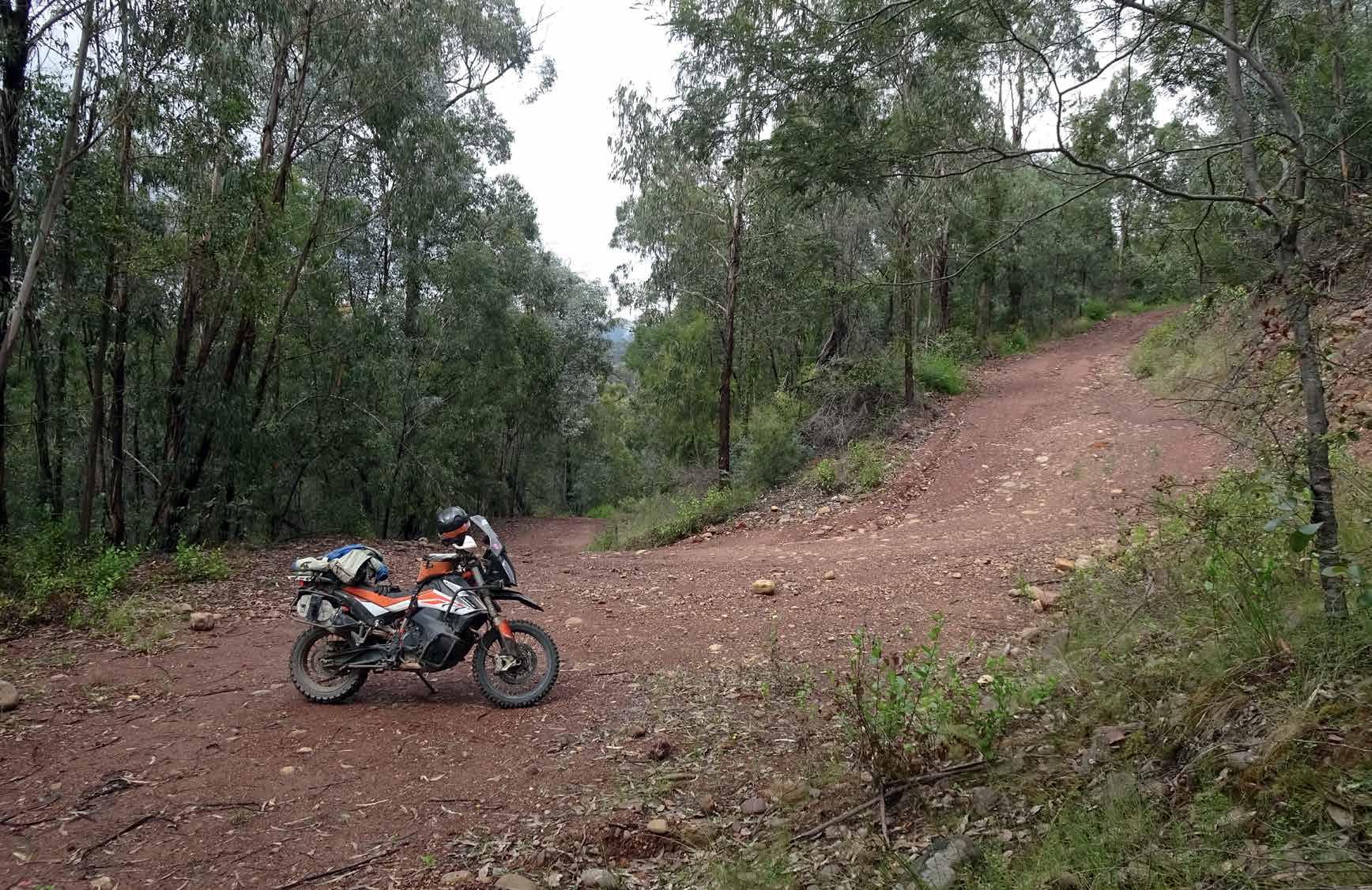
Moroka Range Track I’d go right to the East Pinnacles, but due to time being tight I went left, and things were rougher than expected.
On Mount Wellington Track a rocky crossing of Moroka River saw me stall midway. Thankfully I stayed upright and managed to make it out onto Moroka Road to Arbuckle Junction and Howitt Road. I ducked into Dimmick Lookout for some good views, then stopped at Howitt Hut and had a chat with some of the 4WDers camping there. It’s certainly a great spot.
Thai down
Howitt Road became King Billy Track and straight away the road was much rougher and the going much slower. It’s designated ‘4WD only’ and has numerous switchbacks on a descent to two water crossings which mark the headwaters of the Macalister River.
The first crossing had huge boulders and was very rough. The second was easy, and climbing from the river revealed several big, hidden ruts across the track and some bogholes to negotiate.
The climb met Bluff Track and I stopped at Picture Point for superb views before brief stops at Lovicks Hut and Bluff Hut, two of the highest-altitude huts, and both with interesting histories. I’d spent many nights at Bluff Hut.
Bluff Link Road to Bindaree Road meant riding past Bindaree Falls. Unfortunately time didn’t permit the short walk behind the falls, and the tight, winding road was covered in a thick layer of bulldust.
The junction with Circuit Road was straight across from Monument Track –which led to Craigs Hut – but again time was against me. Instead I followed Circuit Road and Speculation Road and found Little Clobber Track was closed. Plan B was what’s known as ‘The Staircase’. It was rough but okay, and took me into Lake Clobber for a photo, then a blast along Clobber Lake Track had me at Abbeyard and facing a good, steep climb with a good surface. That was fine, until about a kilometre in it became a steeper climb with a loose surface covered in large rocks.

I couldn’t get traction no matter which setting I tried on the traction control. Clearly (like the editor would) I wasn’t going fast enough to allow the system to work correctly.
I managed a textbook turnaround and tried Clobber Road instead to Upper Rose River Road and took in good views of The Horn on Mt Buffalo as I joined Abbeyard Road for 30km of tar into Myrtleford. I shut down at 6.30pm after only 360km, but it was a big day.
Although all the ice was gone, the water in the hydration pack was still okay, so I fuelled up and booked into a motel, had a quick tub, and went in search of a feed. There wasn’t much to choose from, but thankfully a Thai restaurant with good
food was open, and I followed that up with a few ales and some banter with the locals at the Buffalo pub. I was quite exhausted.
Myrtleford was in the rearview mirrors at 8.00am the next morning and I joined the Hume Highway at Albury for the slog to Gundagai, Sutton Forest and Heatherbrae Pies for lunch. Traffic was good through Sydney and the run to Newcastle saw me home at 4.30pm after 790km. Before I’d had time to unpack her first comments were, “Good, you’re back in time to cut the grass. The green bins go out in the morning.”
Ah, it was great to be home.


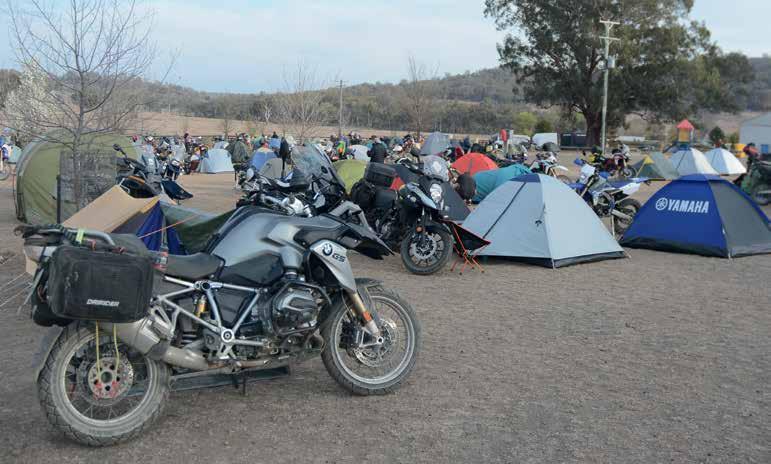
















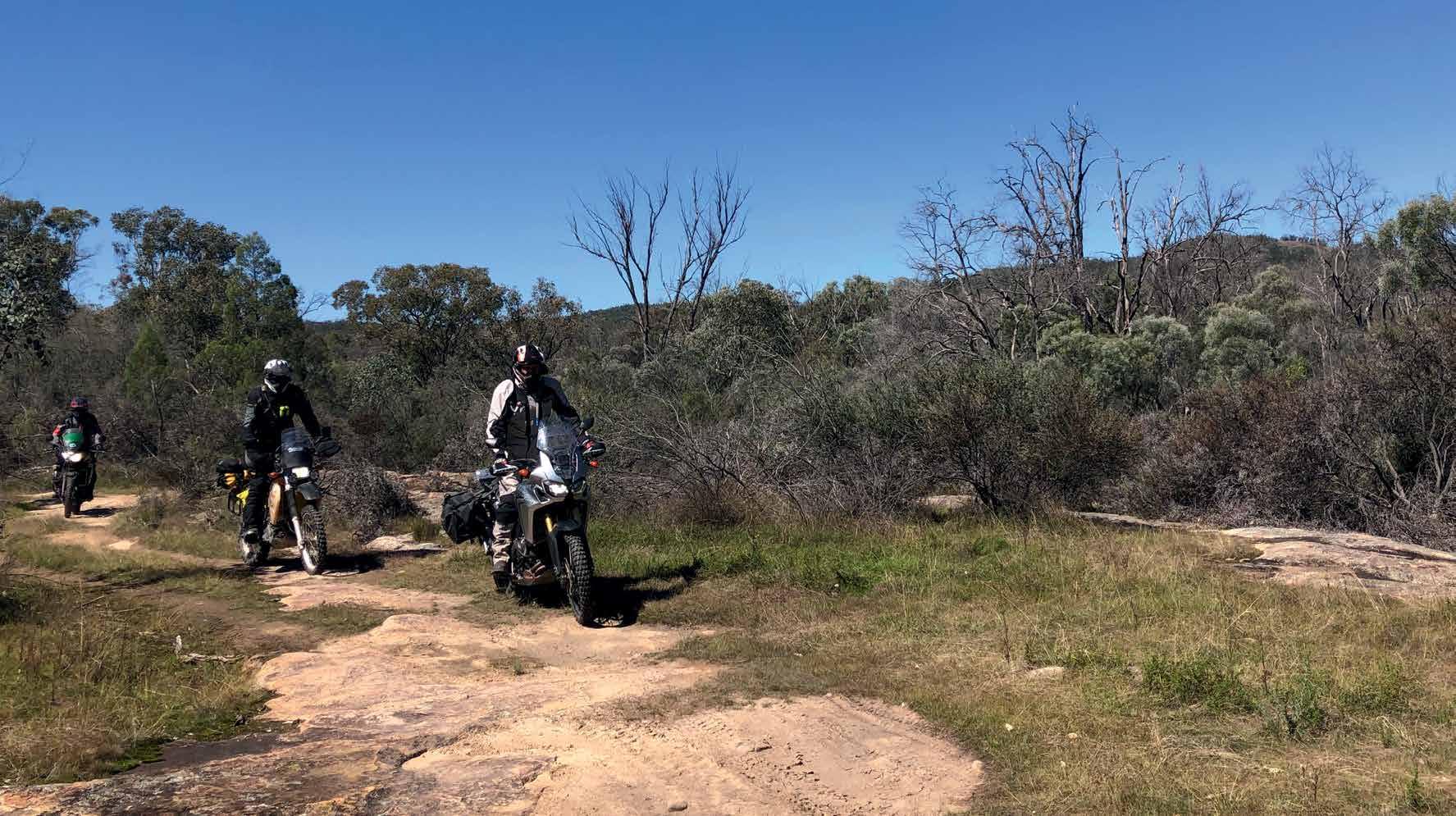

The two big guns in Australian adventure riding – Adventure Rider Magazine and APC Rally’s John Hudson – have teamed up to create an adventure-riding series on Australia’s east coast.
It’s taken a while, but at last adventure riders can look forward to a series of rides designed with adventure and the joy of riding as the main aim.
“Putting together the best riding events possible meant we needed to combine our resources,” said APC Rally main man John ‘Homer’ Hudson, Australia’s foremost organiser of big adventure rides.
Any ride Homer sets up is bound to be huge, but for this series he’s backed off a little on the challenge side of things and put a more emphasis on the enjoyment aspect.
“I was really keen to have all brands involved and adapt the rides to be more social,” said Hudson. “The APC Rally model was all about the riding,
Every ride includes:
R A sweep vehicle
R Luggage carried
R GPS tracks
R The option to ride in a group without a GPS (not recommended)
R The chance to learn from one of Australia’s most experienced adventure riders
R Meeting other adventure riders and forming friendships
R GPS instruction for those who want it
R Maps to keep for future rides
R Riding tips
R Bike-setup tips.
but its multiple-start methods and no regroups meant riders were spread out and it could get lonely.”
During eight years and countless thousands of kilometres of off-road exploration, John logged a stack of easy tracks he never used, and these will form the backbone of the Adventure Ride series. Of course, there’ll be the occasional technical section for those who want to test themselves a little as well.
All welcome
The rides will have a higher level of support than offered in the past and will be designed to allow plenty of socialising. All brands of bike will be welcome and so will riders of all levels, especially those new to
adventure or those looking for an enjoyable few days rather than a life-or-death challenge. The focus will be on providing tracks and track notes for riders, and Homer will be happy to share insight on how to select bikes and gear and help riders get the right information. Find out more at: www.advridermag.com.au/ adv-ride-series/
Above: At last adventure riders can look forward to a series of rides designed with adventure and the joy of riding as the main aim.
Below: APC Rally main man John ‘Homer’ Hudson, Australia’s foremost organiser of big adventure rides.
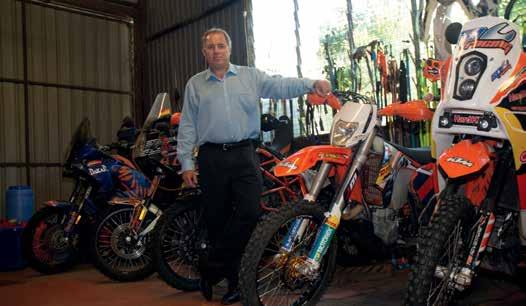
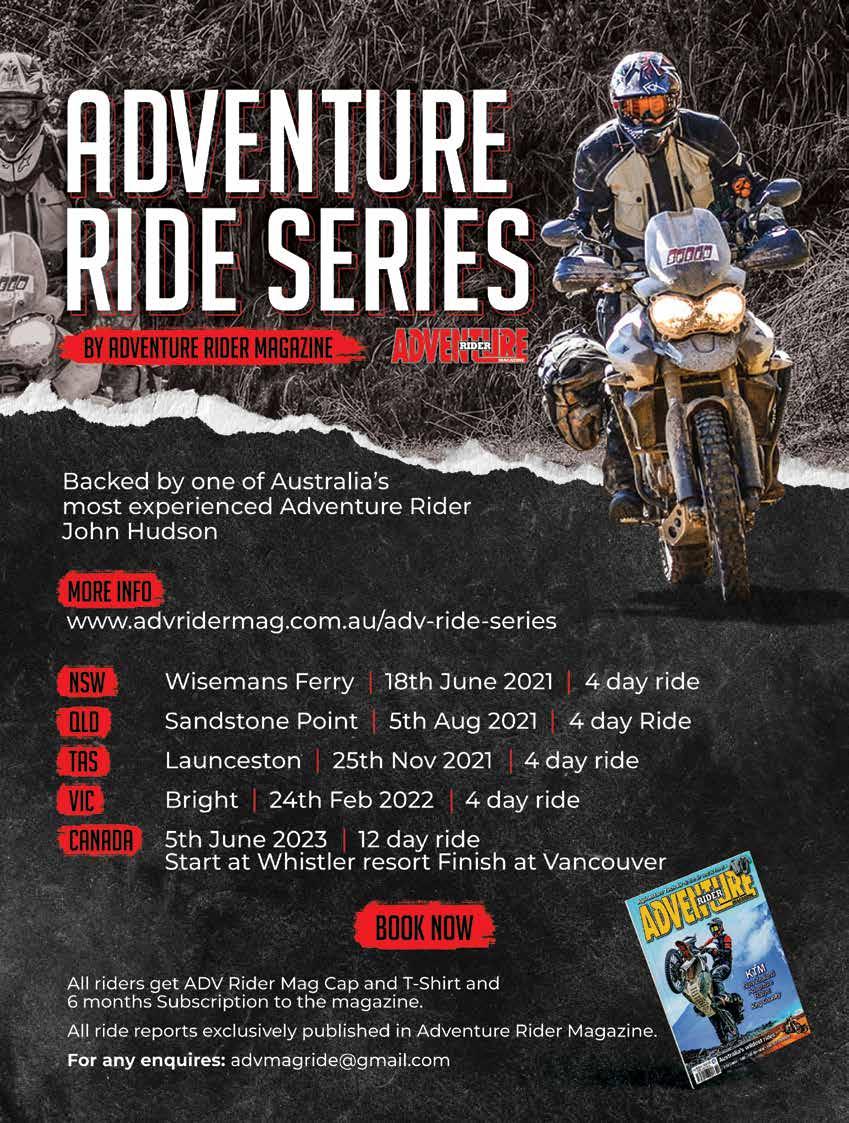
AdventureMoto and RideADV hosted a smackdown ride for industry in the Blue Mountains west of Sydney. Those who still had hair let it down, and everyone had a ball.

The idea was simple enough: invite hardworking notables from the Australian adventure-riding community to come for a ride and forget the pressure of running businesses for a couple of days. In the spirit of fair play, even some not-so-hardworking individuals – like Adventure Rider Magazine’s editor – were included. TF wasn’t able to mount up for this one though, due to a gut-busting effort on a ride the week before, and the mag was represented by ad manager Mitch Newell on his much-loved Husky 701 Enduro.
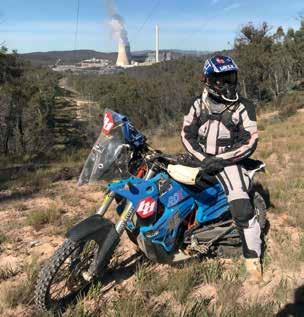
The guest list was a long one, and pretty much everyone was invited. Naturally, not everyone could down tools and sign up, but those that did were treated to an awesome weekend.
As the sun rose over the sleepy, frosty town of Rydal, in the mountains about 150km west of Sydney, around 20 keen, brighteyed riders mounted up and headed out to tackle what would turn out to be an excellent couple of days.
Use your imagination
One of the AdventureMoto team was Chris Bostelman,
a bloke well known for getting facts straight and keeping bikes going. His notes from the day outline a wild episode of true adventure in good company:
Day 1: 434km. 9hrs riding. Average moving speed 47kmph. 6000m total altitude change.
Max Speed:148kph (shh don’t tell anyone).
Corner Man, not a nav ride.
Ride: Rydal to Capertee to Mudgee. Mudgee back to Rydal via Sofala.
Meet Rydal. Depart 0930.
Dirt almost straight away through to Capertee and on to Mudgee.
Quite a few low-speed muddy falls.
Quite a few failed rocky hill climbs.
Lunch: Mudgee
3 broken mirrors, various crashes (WR250 - 2) (701 - 1)
Almost hit a fully grown stag as dusk approached. Adventure Rider Magazine’s Mitch was just behind and saw the impressive animal. A near miss!
Through the last part of the forest we quite often rode two or three abreast sharing headlights. Those with good lighting became very popular.
Greg Yager hit a ’roo at about 7.00pm. The ’roo was checked but didn’t survive. The T7 suffered a broken ’bar riser, bent handlebars and dented tank. Lincoln and repaired the bike. Greg rode with an injured left hand. After the ride he recovered well.
Straight out of the bush in the dark and to the pub for dinner before the kitchen closed. Phil at the Rydal pub provided a tasty yet entertaining meal.

Experienced riders will read a great deal between those few lines, not the least of which was a close encounter with a stag.
“I was following Chris through some nice twisties and a whopper stag ran across in front of him,” said Adventure Rider Magazine’s Mitch with eyes like dinner plates. “It was pretty bloody close too. For a split second I thought it was a seven-foot kangaroo, but its motion and giant horns cleared that up.
“I was keeping an eye out for Laura Palmer while riding through Twin Peaks after that!” he said.
And three broken mirrors and ‘quite a few’ low-speed falls sounds as though there was some spirited behaviour from the assembled professionals.
One rider of note was Dakar finisher Scott Britnell who rode his beautifully presented KTM rally bike. It’s not easy to impress a batch of cynical, hard-hearted retailers, importers and journalists who’d seen it all over many years, but Scott’s bike earned admiring glances and even some poorly concealed drooling from the assembled throng. The sound of the Kato with the throttle cracked open caused a few bulges in nylons as well.
The second day was another of fine weather and even finer riding. Chris’ notes give the bald facts:
Day 2: Rydal Loop: 110km. 2hrs45mins riding. Average Moving speed 39kph. 2500m altitude change.
Max Speed: 160kph. Definitely don’t tell anyone about this one.
Ride: Oberon, Jenolan State Forest, Hampton through Sodwalls, Rydal.
Six Foot track - Bike drowned Danial, aka ‘Rooster’, dewatered a T7. The team had a rest stop while the dewatering was completed.
A T7 almost disappeared when crossing a log bridge. The bike’s back end slipped between the logs and stopped on the dry creek bed below. Many hands made lightish work as the bike was recovered and we decided to take a different track.
It was very dusty for most of the ride.


with dust. Great route with good mix of terrain courtesy of Greg and Abbey from RideADV.
So there you have it. A stellar two days where a great bunch of people with a huge commitment to adventure riding were able to cut loose and enjoy a weekend out of the offices, workshops, stores and warehouses that normally claim their every waking moment. Big props and huge thanks to AdventureMoto and RideADV. You guys rock.
left: This rider – who asked not to be named – started the first day looking good. But moments later…

Tim Stolz and Jonathan Alvarez tagged along with the hardy members of Melbourne’s MADCAT adventure-riding club on a ride named after the singer and songwriter of the 1983 anthem Roll Me Away.


They say it’s only mad dogs and Englishmen who go out in the midday sun, but it appears it’s only MADCAT motorcycle tragics who go out in the pouring rain…and we all know how much cats hate water.
After dreamy low-20s temperatures the day before, the heavens opened in Melbourne on the day of the Bob Seeger ride itself. It looked for all the world like a miserable midwinter day as six hardy souls – of the original 17 – sloshed their way out to the rendezvous point at Yarra Junction to start three days on mixed surfaces. At its conception it was imagined as a mid-Autumn ride with the weather at its balmy best: warm, still days, dry roads, native bush, a campground on a river and a hearty pub meal each night.
As Taylor Swift said, “Just because you make a good plan, doesn’t mean it’s gonna happen.”
Latecomers
The aim for the first day was to ride up through Reefton to Cambarville on the narrow, wormy blacktop, take the Warburton-Eildon Road, a well-maintained dirt thoroughfare used by logging trucks midweek, and then circumnavigate Lake Eildon in a clockwise direction to end up at Jamieson.
Roadworks and closures meant we had to take the Acheron Way to Marysville, and despite the weeping skies, the ride was a lot of fun. While there was plenty of the wet stuff, the track wasn’t particularly slippery.
Starters were Robbo, Jonathan, Harold, Tim, Simon, and Colin, the last of who, despite our threats and entreaties, was still last to arrive at the rendezvous, this
time only 10 minutes late. At least his thimble-sized fuel tank was full, but most of his large load was strapped above the pillion seat like the Leaning Tower Of Pisa. And him an engineer. You have to scratch your head in wonder. The guy had ridden a trike with a flat tyre through an Afghan mountain pass, so lousy weight distribution clearly didn’t bother him.
Stephen had to start the ride in Richmond a couple of hours later because he was bidding on a handkerchief-sized piece of dirt that, had he been successful, would’ve gone down in history as the world’s most expensive garage. Reason prevailed and he was left behind in the frantic bidding of the inner-city wannabes happy to sleep standing up in a broom cupboard. David also took the sealed road to Jamieson after a late start and both arrived looking crisp and clean after a dry ride on the Macadam. There’s a lot to be said for keeping gentleman’s hours.
For the rest of us, apart from soggy bottoms, the ride under leaden skies was enjoyable and uneventful until Robbo realised he had a rapidly deflating front tyre. According to Robbo it was a pinch flat from hitting a rock when hurtling along at warp speed to escape Colin’s hot breath on his neck.
It was a chance to put into practice
Top left: Three days, eight riders and some sensational scenery.
Left: The MADCAT team at Noojee Trestle Bridge Walk on a three-day ride in Victoria. Below: From Jamieson it was a climb to considerable altitude. u


the tyre-changing workshop of a month previous, but as the great baseballer Yogi Berra said, “In theory there is no difference between theory and practice; in practice there is.”
It was a prophetic statement if ever there was one.
The wheel came off, the bead was broken, the tube removed, a new tube fitted with some difficulty, the tyre refitted to the rim – even more difficult – and then inflated with any number of electric pumps. The last turned out to be impossible. The tube had been pinched while levering the tyre back onto the rim.
No one would take ownership for the deed and, plenty of expletives later, the tyre was off for a second time, the original tube patched thanks to Harold’s knowhow from riding pushies around Colombia as a kid and his vast array of tools, the tube reinserted with even more expletives as we struggled to get the valve stem
through the small hole in the rim, and the job completed.
It wasn’t quite a four-second F1 pit stop for four new tyres and a full fuel load.
We rode the last 10km to the EildonJamieson Road, and with heavy rain visible over Mansfield, went straight to Jamieson rather than riding round the lake via Skyline Road. There we were met by the groomed and coiffed Stephen and David who looked like they’d spent a day preparing for Best Dog In Show as contestants.
Accommodation was a couple of dry, warm cabins. That meant no tent pitching or unpitching. It also meant an early visit to the pub where they served, among other things, olympic-sized lamb shanks and MCG-sized steaks.
It was interesting to see how Harold was talking about his new, healthier diet and
smaller portions when a 500gm steak plus sides was served.
That was proper country fare!
After everyone’s tummy was happily filled with copious amounts of food and booze we headed to the cabins, only to realise there was a big party not far away. We threw some wood into the firepit and started chatting, relaxing and contemplating how nice the day had been.
Suddenly Colin, sounding confused, asked, “Who is Bob Seeeeger?”
We all laughed and replied he was the singer/songwriter responsible for classics like Turn The Page Main Street, and of course, Old Time Rock’N’Roll
“Yeah, yeah, yeah, I know,” said Colin patiently. “That’s Bob ‘Seger’, not ‘Seeeeeeeger’.”
There was a sudden silence.
Tim checked on Google and confirmed

Left: A chance to put into practice the skills learned at a tyre-changing workshop.
Below left: Accommodation was a couple of dry, warm cabins.
Right: It’s only when he’s riding an adventure rider feels truly alive.
we’d named the ride after someone no one had heard of and many laughs followed.
Well played, Colin. Well played.
The next morning saw everyone clear of head and excited about a day of dry-weather riding to Licola and Paradise Valley Camping Park. Robbo was the exception. He stared glumly at his front tyre which had deflated again overnight while the optimists offered, “It’s only on the bottom”. It signalled the end of the trip for him and he set out on a careful ride home on the road much travelled.
Simon led the group in Robbo’s absence and Jonathan very kindly accepted the role as sweep for the whole trip.
We left Jamieson in morning fog and spent time climbing to considerable

altitude. Breaks in the snow gums showed clouds carpeting the valley floors below and breaks of dazzling sunshine above.
The last 20km into Licola was a series of beautifully cambered squigglies that just invited attack. We descended into the valley of the Macalister River where we had to do a loaves-and-fishes stunt with the last three pies and pasties at the Licola general store for lunch.
The setting for our second night was Paradise Valley Camping Park. Set in a verdant valley adjacent to the river, we were warmly received by the owners Cheryl and Steve. It’s fair to say since COVID19 Victoria’s urban dwellers have rediscovered their bush: they’re out there in droves. However, being a Sunday night on a non-holiday weekend, we had plenty of space to spread into



and avoid the chainsaw-massacre sound of the snorers.
We cancelled the bus trip into Heyfield for another pub dinner and instead rode in, picked up some supplies, begged and borrowed tongs and so forth from other campers, and had a charcuterie feast followed by sausages in bread with fried onions, barbeque sauce and lashings of good humour fuelled by alcohol and bonhomie.
A roaring campfire was a warm focal point on a full-moon night and became the bush TV when conversation flagged. Before dinner, Colin put on a command performance by riding up and down a goat track that got steeper the closer he got to the top. It looked pretty forbidding to the rest of us, but he and the 690 were joined at the hip like Siamese twins. He
made it look easy-peasy lemon squeezy. There were some experiments in campfire management with the logs brought by the adventurous team on the back of the bikes, and the life of the fire was extended for a while. Jonathan and Harold kept up an unbroken stream of Spanish for hours after the rest of us turned in. I’m sure they’d mastered the art of cyclical breathing.
The final morning had a grumbling start to the day, especially for Stephen, who seemed to object strenuously to being woken 10 minutes after first light. The language of a bullocky almost vaporised the walls of his cute little dome tent. Braying a stream of expletives like an unhappy mule did him no favours and we soon got him to forsake the comfort of his feather bed in search of


Left: Descending into the valley.
Below far left: There were some experiments in campfire management with the logs brought on the back of the bikes.
Below left: A roaring campfire was a warm focal point on a full-moon night.
Above: Mount Baw Baw Alpine Village was five degrees Celsius and shrouded in fog.
revenge. It was a dish, I reminded him, best served cold.
A calendar would be a more effective timepiece than a stopwatch to track Colin’s packing. He takes forever, and it’s the absolute antithesis of what he was like on the bike.
Harold, another green bottle to fall off the wall, was an early departure via the freeway as the daily grind tightened its grip and he had to return early for work.
We were down to six and embarked on a wet ride on a fast dirt road from Cowarr to Rawson and soon after onto South Face Road up to the Mount Baw Baw Alpine Village. It was five degrees Celsius and shrouded in fog when we arrived. From there we made the final purr home via bush tracks and forest roads on a warming afternoon that left the air redolent with the scent of eucalypt.

Although it may sound like the last day wasn’t filled with stories, you need to picture the mighty beauty of the place, the road, the light and the feeling. I can still see in my head a special moment when the trip organiser dived in front of the
sweep and there were a lot of leaves on the dry dirt road. The brown soil was covered in yellow and red patches surrounded by trees and mountains of green. As the rear tyre rolled, the multicoloured leaves lifted and floated for a second as the bike passed, creating a glitter-trace effect. It seemed as if the bike was floating in a cloud of fairy dust. It was like magic.
The following day it occurred to me the paradox of an adventure motorcyclist’s existence is that it’s only when he’s riding he feels truly alive. And the more he rides, the less alive he feels when he’s not.
Thanks to everyone for making this such an enjoyable Roll Me Away Bob Seger ride.
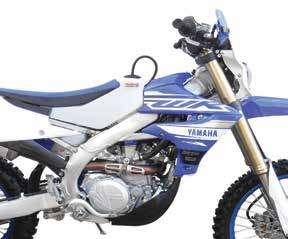


MADCAT comes from Motorcycle ADventure CAmping and Touring, and is a Melbourne club which tries to fill the gap between full off-road and road-based clubs. MADCAT tries to explore Victoria on as many backroads as possible among some of the most breathtaking natural environments and scenery Australia has to offer and is looking to organise interstate trips. Find out more and download the GPX tracks at madcatvic.com. The GPX files will also be available from advridermag.com.au.




II really must spend less time lying on the ground acrobatically genuflecting to the gods of adventure riding. It hurts. Please…don’t make me laugh!
It especially hurts when my latest efforts were on my sparkling new Kato 890R Rally while learning how to not fall off the bloody thing. As if to rub sand into my sweaty armpits, it all happened so fast. I felt totally deflated. A huge chunk of confidence popped out of me like the splattering of a thrown egg.
After a brief, stunned, self-injury survey and a rest in the shade, I forced myself back on the bike. From an early age we’ve been told to get back on the horse as soon as possible and recover what we can from the experience. It helps to have a crack while the adrenaline is still flowing, and before the old-crock stiffness sets in.
Lots of times we’re in situations where we have few other choices – unless Daddy owns a helicopter-rescue service. Many of us have climbed back on our bikes with bits of our body aching, talking ourselves into the belief nothing’s broken. “It’ll buff out,” we tell ourselves.
Balancing on top of an inherently unstable motorised device is difficult enough (yeah, yeah, gyroscopic forces ’n’ all that). Many people can’t do it, and of those that can, most choose not to go within cooee of dirt roads. We that do get the bikes dirty should think we’re members of the chosen few and that alone should bolster a bit of self-belief.
Watching the instructors dance a ballet on their bikes only seems to rub in the ‘unco’ feelings I have. Try as I might, there is less than a snowball’s chance I’ll ever get mine to even get a ‘boot scoot’ going.
Confidence waxes and wanes with aches and pains. It repairs so much slower than bodily injury and has a cumulative effect when the incidents are close together. Confidence recovery seems to be exacerbated by enforced time off the bike due to injury and it can often feel like we’re starting all over again. How many times have we seen riders fall a few times in a row and find themselves totally defeated? It takes great courage to persist and push through.
Motorcycle riding of any kind is a confidence trick. As any primary school



teacher will tell you, confidence is built on success. The task we face is stringing one positive event after the other. I’m gonna put on my big floppy hat, pack my play lunch and skip off to a few circumstances where I can grow back into the meagre skillset I’d developed before I made eyes at the ground…again!
Far left: Confidence waxes and wanes with aches and pains.
Below left: The sparkling new Kato 890R Rally. Bottom left: The Galah showed Andy what he should be doing.
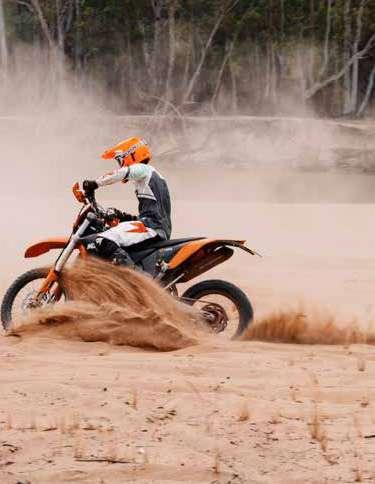



Life doesn’t get much better than heading out on an adventure with your mates: great riding, seeing incredible places and getting through some of the challenges together.
In each group there are usually one or two guys who put their hands up to plan the ride, and with so many new adventure riders there are many considering planning their first ride. It’s quite difficult to cover all bases when putting together a ride, but some of the challenges include:
R Choosing a location and the right season to go there
R Not making the ride too hard or too easy
R Days shouldn’t be too long or too short
R Ensuring the best tracks and locations of an area are included
R Coming up with the best way to navigate and keep everyone on track
R Having options in case of bad weather, or ways to shortcut the ride to make the destination on time if the day has blown out a bit
R Making sure you have an idea of the abilities of each rider (one very weak rider can impact the whole adventure)
R Making sure there’s enough fuel, spares, water and other necessities throughout the group
R Providing a good level of information pre ride, in the planning stages, at the beginning of the ride
and during the ride. Setting clear objectives and expectations may help you get the right crew together. A group of like-minded travellers will have a much better experience than a crowd of people from different planets.
Ambitions and abilities
hear of many rides that don’t end up the fairytale they were meant to be because people just bit off more than they could chew. You need to be able to walk before you can run, so plan a few smaller rides to get a feel for some of the processes and challenges, and to try to get the group together and ensure it’s a good mix. When it comes to planning a bigger ride, choose a suitable location based on your riders’ skills, experience, fitness and bikes (please don’t read into this that big bikes can’t go challenging places. It always comes down to skills, fitness and other performance factors).
When it comes to distances, try not to be too ambitious on how many kilometres you can cover in a period of time. Sure, the odd bigger day may be necessary to link certain places together, but trying to cover too much distance day after day can be a trap. Fatigue may cause an accident which can really impact the ride, the schedule, and the general enjoyment of the whole event. Be realistic and always factor in
Left: Be efficient with what people are carrying on their bikes. Pair up riders of the same model bikes to share tools and spares.
Top right: Make sure people aren’t struggling with a problem.
Below: A group of like-minded travellers will have a much better experience than a crowd from different planets.



extra time for bad weather, flats, mechanicals, slow riders and of course, to stop and smell the roses!
Depending on the experience of the riders and the size of the group, one of the best ways to navigate is the tried and trusted ‘cornerman system’. The only issue is, there are two versions of the system, so you need to be very clear about which one is in use. Make sure to test it out so everyone is on the same page before the situation arises where half the group is heading in the wrong direction. It happens all the time. I would describe the two versions as: the more common version ‘Cornerman One’ – stay on corner until the sweep rider arrives; and the less common version, ‘Cornerman Relay’.
The Cornerman One version means there’s a designated lead rider who stays at the front and a designated sweep at the back of the group. At an intersection the lead rider places the next rider behind them in a position that directs the rest of the group to follow in the correct direction – usually at a fork or turn.

The cornerman only leaves their position when the designated sweep rider gets close and gives them a thumbs-up or highbeam flash or other agreed signal. The cornerman then takes off in front of the sweep and is free to circulate forward through the group.
The Cornerman Relay version starts off the same way, but the rider only stays on the corner position until the next rider gets close and acknowledges they will be the new cornerman, and so on through the group.
There are pros and cons of both. The main of benefit Cornerman One is there are less movements. The cornerman can be positioned in an ideal location and they just stay there. This gives the stopped rider a chance to have a break if the group has spread out a bit. They can
have a pee break or a snack and wave to the rest of the group as they go by. The negative can be some faster riders keep passing the slower riders. If they’re polite and patient this isn’t always a problem. But they’re not always polite and patient. In dust this means there can be a lot of passing and dust thrown up for everyone. It can be dangerous.
The main benefit of the Cornerman Relay method is there’s a lot less passing. After a short time riders normally find their natural position within the group. Faster riders work their way to the front and slower riders towards the rear. This can be much safer, especially in the dust. It also means, potentially, everyone can have a bit of a rest, except possibly for the last rider. But the sweep rider can be aware of this and manage accordingly.
Left: Always factor in extra time in case everything doesn’t go exactly to plan.
Below: Ensure the best tracks and locations of an area are included.
Right: Be organised and thorough. Share details with your group.
When I first started adventure riding nobody had a GPS. Now they’ve become almost standard equipment.
Over the years I’ve had a love/hate relationship with my various GPS units. Now, after learning how to get the best out of them, they’re an amazing tool to help with route planning and navigating.
I’m not the country’s most edjumekated GPS user, but I know how to use the Garmin platform quite well to suit my needs. If you have the experience to use Basecamp or another platform to create a route, you can probably save said route as a track. Then your riders can upload them to their units.
I won’t go into every detail as that could end up looking like a Touratech catalogue, but a ‘track’ is like a texta mark on a map. You can follow it and it won’t deviate from what has been provided, no matter what version software, firmware, blah, blah, blah you have.
A route is a dynamic navigation aid that will/can recalculate based on many factors, like unit version, software, firmware and settings. So, the chances of getting to a T-junction and one GPS saying turn left and the other saying turn right is possible, maybe even likely. The moral of the story is, trust tracks,
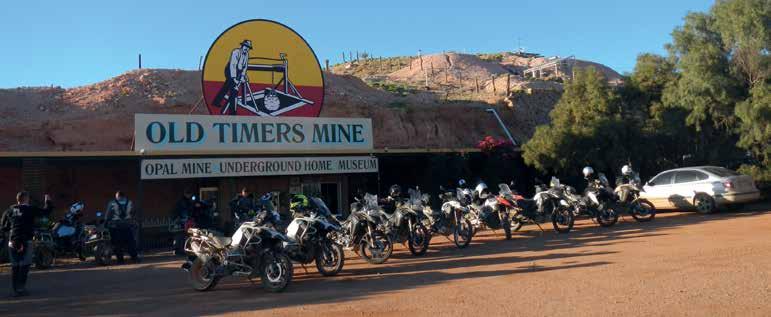

don’t trust routes.
It’s possible to run both on your unit at the same time, and where they don’t follow each other, follow the track.
Planning a ride is like planning anything else. Be organised and thorough and there’s likely to be less last-minute dramas. Make a list and try to cover off everything. It’s handy to have more info rather than less. Share details with your group, like accommodation addresses and contact numbers. Be efficient with what people are carrying on their bikes. Not everyone needs to bring everything. Pair up riders of the same model bikes to share tools and spares. The same with everything else, remember when packing, ‘less is more, and if it’s not 100 percent necessary, it’s totally unnecessary!’ Even get the riders to hand over next-of-kin details. You hope you never need them but it’s best to be prepared.
As the tour creator, you may want to lead the ride yourself. Maybe you feel it’s better to get someone else to lead, based on their riding skill, pace or experience. Obviously, the lead rider needs to be able to navigate the route, either from experience or using a GPS or map.
Being a fast rider doesn’t necessarily make you a good lead rider. A good lead rider will always have part of their brain focused on, ‘How may this terrain or these riding conditions affect the various riders in the group?’ If you’re concerned for any reason, pull over and regroup with the team. See how they’re doing and make adjustments as required. Make sure people aren’t becoming dehydrated, fatigued or struggling with some other problem.
If you see something on route that’s a boobytrap, consider putting a cornerman just before the danger to act as a ‘danger cornerman’. They can wave people to slow down or to miss a particular obstacle or danger.
The ride creator and or lead rider should feel a sense of responsibility to get everyone to the destination safely. There’s time for fun, for sure, but at the end of the day you want everyone in safely at the end of the ride having a beer and talking shit about how good the day was.

Rider training with Miles Davis
New for 2021! Two-day courses for smaller trail and enduro bikes, as well as regular adventure-bike courses. Improve your off-road riding skills and have a great time. All brands welcome. Suits novice to experienced riders.
2021 course dates
June 25-26 trail/enduro
– Dargle, NSW
June 27-28 adventure bike – Dargle, NSW
August 6-7 trail/enduro –Toowoomba, Queensland
August 8-9
adventure bike –Toowoomba, Queensland
September 8-9
adventure bike –Green Valley Farm, NSW (Pre NSW Congregation)
Learn about:
vBike set up
vClutch/throttle
vCornering
vUphill/downhill
vObstacles
vWheelies
vBraking
Improve your:
vBike control
vPrecision
vConfidence
vTraction
vBalance

With 20 years experience in off-road rider training
For more info:
www.advridermag.com.au/off-road-training/ Email: advriderskills@gmail.com
Phone: 0448 342 590

It started off in bed.
Husband Dave and I were laying beside each other one morning. I was reading some book by one of the Russian greats while he was surfing the ’net. He turned to me, pointed at an image on the tablet and said, hopefully, “How about we do this?”
I readied myself for what he was eagerly anticipating but was slightly surprised and partially intrigued. It wasn’t something I’d considered us doing. It was a bit out of the blue.
I’m not sure what you’re thinking, but it was an ad to take your car (or in our case, bikes) to Tassie for free.
An hour later we were booked for a two-week trip.
Pieces in place
Over the following months we debated on whether to ride to the boat or put the DR650s on the ute and
drive the 1600km to Melbourne. We figured with the time we had available there’d be little opportunity to deviate onto good tracks anyway, so we might as well be sitting in the ute talking to each other. My sister, Kathy, lives in the hills outside Melbourne. With COVID it’d been a couple of years since we’d seen each other, so we decided to have a day or so with her and leave the ute there during our trip.
In the meantime we became first-time grandparents. Our daughter Bessy and partner Sam gave birth to a beautiful baby boy! They named him Tasman. As you can imagine, leaving that little newborn Tassie (and his mum) for a few weeks was hard.
While Dave is known as the human GPS, that applies to places he’s been or when he’s taken time to study tracks on a map (it doesn’t apply to shopping-centre car parks). So, when he said it was fairly easy to get



Top
Middle
from Kathy’s to the West Gate Bridge, and then to get to the boat, and he had it routed on his tablet, wasn’t concerned. When I did become concerned was after we got off the bridge and he was riding along standing up on the ’pegs looking around like a meerkat. I eventually found out he hadn’t actually worried about the directions to the boat because he thought there’d be signs.
It was a daytime sailing and we didn’t have a cabin or allocated seats, but that was fine because we wandered around, watched the water and chatted to a lovely couple who were seasoned Spirit Of Tasmania travellers and also riders. They laughed at any notion of that particular crossing being a bit rough.

Entering Tasmania was akin to entering a foreign country with border controls. It took us about an hour from the time we got to the bikes to get out onto the street. That included the time it took for me to work out the reason couldn’t wheel my bike back was because of the rubber band the crew had looped around the brake lever to help stop the bike moving.
After Dave’s Melbourne navigational incident I offered to navigate to our accommodation once we got off at the correct highway exit.
While knew my earbuds were playing up, figured not being able to turn them off wouldn’t be a problem.
We’d barely got onto the highway in the dark when suddenly the end of a podcast I’d been listening to on my phone weeks before started playing. ‘That shouldn’t be an issue,’ I thought. ‘It’ll stop at the end of the podcast or the navigational instructions will cut in over the top.’
However, there was an issue. It replayed those final 10 seconds of audio again and again and again. By the time we got to the exit I was no longer in charge of my own thoughts so it didn’t occur to me to stop and fix it.
‘I find it hard to believe you don’t have...’ “In 300m turn left.” ‘...your eye on the clock.
u

*Chuckle. I certainly do. Does mummy say we’re out…’ “At the roundabout, take the third exit.” ‘…of time? Mummy says we are out of time. find it hard to believe…’ “Your destination is on the left.” ‘…you don’t have your eye on the clock. *Chuckle. certainly…’
If you don’t live in Tasmania, or have never visited there, you’re missing out. I reckon a job in Tassie tourism would be the easiest job ever. The place is truly spectacular. The advice we were given before going was to keep an eye on the weather. If it’s raining on the west coast, head east and vice versa.
Keeping in mind we only had two weeks, we were never going to see the whole state, but we really underestimated just how long things would take us. Especially initially. It was really hard to ride past a lookout or a walk or just a
magnificent bit of scenery without stopping in awe.
The first few days were spent in the northwest exploring The Tarkine, marvelling at the beautiful and unforgiving coastline, riding among fern trees, finding sink-hole lakes, waterfalls, giant trees and hidden camp spots. Plans to head down the west coast were thwarted by rain, so we headed east, checking out places like Leven Canyon and Great Lake. We happened to coincide with a cold snap, which we thought would make it a good idea to ride up to the Ben Lomond ski fields. It was particularly beautiful riding through the alpine forest with its hunched trees and bushes swathed in moss, and even more stunning when I realised we were riding in gently falling snow so light it almost appeared to hang in the air. We rode up Jacob’s Ladder looking at all the snow that had settled around the
dolerite columns and scree slopes. Being up there in -1°C with those views was magical.
We had a lot of difficulty deciding where we should go.
Yes, it’s a small place, but there’s so much to see and do, let alone tracks to ride.
There were places we never quite got to, even though they were really close, because we’d take a detour or have something else we really wanted to do. Dave had a plethora of tracks that would’ve taken months to cover downloaded onto his tablet. Some were amazing, others had sections washed away due to the rain earlier in 2021 and others were locked up. A few we turned around on because an injury or damage to a bike would ruin the trip, and because we were there

Left: A hidden campsite on the Arthur River. Below left: In the ranges around Lake Pedder. Everywhere was like a postcard.
Right: A snowy wonderland.
Below: Karen’s DR at Ben Lomond. Below right: Snow views on Ben Lomond.
for an adventure ride, not to spend four hours trying three different tracks to find a shortcut through the bush (that was an interesting morning!).
Every day was full of highlights and it was the only occasion I can remember where I wished I’d had some form of helmet communication with Dave so we could share our amazement in real time. Our scariest episode was on top of Mount Wellington. It was quite blustery. We’d just ridden in the rain over the Tasman Bridge in Hobart with the wind pushing our bikes dramatically, so we were both a bit nervous. But reaching the top of Mount Wellington brought a whole new meaning to ‘windy’. I saw people falling over as they tried to walk. We both struggled to negotiate the road around to the carpark and tried to park between two cars. Then we realised there was no way we’d be able to leave the bikes without the very real possibility of them falling over. I was petrified at the thought of trying to ride the very short distance needed to get out of the strongest wind.
In the end we both walked my bike down to a spot that was slightly less dangerous, then Dave returned and walked his down by himself. I think I can safely say neither of us will be in a hurry to go back there on a bike.
We finally got to meet the lovely Jo Wharmby, founder of the Women

Adventure Riders Australia Facebook page, and her husband Chris. They had Roz Konstek Veersma staying with them, a passionate adventure rider currently travelling around Australia on her CRF250L and sharing her journey through highly entertaining Youtube videos. They convinced us to stay, too (it wasn’t hard; it was wet and we needed showers). They put together a slap-up meal and we had a fabulous time.
Loved it
For two people who love that big-sky, red-dirt country, we have a special place in our hearts for our other Tassie now and can’t wait to get back.
R Check for rubber bands around your brake lever
R Go prepared with lots of layers
R Ask a local which apple is best in their area
R Tar roads can be (almost) as enjoyable as a dirt track
R We’re completely in love with both Tassies
As far as other highlights, we were astounded by the stunning blue stones at Freycinet National Park and the ranges of the southwest around Lake Pedder would have to be some of most striking scenery I’d ever seen. The water in streams was crystal clear and everywhere we turned was like a postcard (or for the young ones: ‘Insta-worthy’). Mount Barrow was Dave’s riding highlight. He reckoned it made Jacob’s Ladder pale into insignificance. It took us a little while to work out how to tackle this trip. Two weeks isn’t a lot of time so we knew it’d just be a taster. The fact never got my joggers out of my panniers the whole time showed we never did walks longer than a couple of hours. There were visions of whisky and gin tasting, but we didn’t come across a distillery beside a campground. And after all the talk of amazing food we mostly cooked our own (fresh kipfler spuds in the fire and crunchy Geeveston Fanny apples) plus we had the obligatory scallop pie. Apart from two nights at Jo and Chris’ we camped in a variety of National Parks, free camps and two caravan parks. The bikes went really well and we were pleased with how we had them set up. We had a range of weather conditions, but we were well prepared.



Boots are a hot topic for adventure riders. There’s a camp that says, “Motocross boots only! Nothing else is safe enough!” On the other side of the trail there’s the camp that says, “We’re not riding motocross. Comfort is important on long rides.”
Both arguments are valid and we’re not taking sides. It’d probably be a good topic for discussion on the Adventure Rider Magazine forum.
But for those who like a high degree of hoof harmony, and are ready to accept some level of compromise to achieve that goal, Sidi has a bottler. It’s called the Adventure 2, and the importer has set us up with a pair.
Dry as
We admit to having a high opinion of Sidi
before we took delivery of this pair. Our experience with the Crossfire, a premium off-road boot, formed the impression Sidi product sits right at the top of the quality tree. So when the Adventure 2s showed up we nearly injured ourselves ripping open the box to see what was on offer. We’ve run the boots in Checkout, but to refresh everyone’s memory on what we’re talking about, Adventure 2s are available in three colours. The black jobbies are full-grain microfibre, and the browns and greys are suede. We received a grey pair, and we reckon they look really schmick. Along with TPU protection on the shin and a plastic ankle support, the Adventure 2s have a Gore-tex membrane, and although we’ve only been wearing the boots for a few months, we’re very impressed with the way they keep water

1: That little badge means feet stay dry. The liner must be good quality Gore-tex, because feet don’t get sweaty when the heat’s on.
2: Instead of having to feed a strap through a loop-type receiver, the Sidis have a system where the end of the buckle is ‘open’.
3: A dual-pivot TPU ankle support and stretch panels here and there make for exceptional freedom of movement.
4: The rubber sole has a chunky tread pattern that’s a good trade off between comfortable flexing and rigid protection.
5: The Gore-tex membrane runs right to the top of the boot.
6: Some cleverly placed transverse stitching behind the TPU shin protection.
There’s some cleverly placed transverse stitching up the shin, and combined with a dual-pivot TPU ankle support and stretch panels here and there, the freedom of movement in the Sidis is exceptional.

For out-and-out impact and abrasion protection both the toe cap and heel cup are tough, and there’s the usual TPU panel on the shin and in strategic positions around the boot. All the stitching is recessed and the rubber sole has a chunky tread pattern that hits a good trade off between comfortable flexing and contributing to structural integrity. One of the big impressions when we first rode with the Sidis was how great was the feel and contact with the bike. Not just the gear selector and brake lever, but the feel through the legs where they met the frame. It makes a noticeable difference to the ease of controlling a bike when the pace goes up.



out. Not just in the rain, but when standing in creeks, puddles and watercourses. The Gore-tex liner looks like it runs right to the top of the boot, and that’s a big bonus when it’s time to go wading. As long as the water isn’t deeper than the top of the boot, the feet stay dry.
Move it
One obvious difference to a motocross boot is the Adventure 2s having only two buckles. We actually don’t mind the extra buckles on motocross boots, but two-bucklers are really quick and easy to get on and off, and we like that. The motocross-boot brigade will say the rigidity of the boot will be less with fewer buckles and that’s true. But we reckon the protection of the Adventure 2 is still pretty damn good.

We did see the soles are one piece. The arches can’t be replaced separately, and we expect that’s a big contributor to the effectiveness of the waterproofing and the strength of the boot. Arches being carved out by footpegs is the most common cause of us retiring a boot though, so we’ll see how that works out over time.
The buckles are really easy to use as well. Instead of having to feed a strap through a loop-type receiver, the Sidis have a system where the end of the buckle is ‘open’. That’s probably the best way we can describe it.
The strap slips into the end of the buckle and the buckle clips closed.
Easy-peasy.

Top
Aside from all the technical background, we’ve found the Adventure 2s superbly comfortable while still offering good shielding from impact and abrasion. They should be an absolute bullseye for the longdistance crowd and the dualsporters who don’t expect to tackle a lot of enduro-type terrain. They’re incredibly comfortable and easy to wear, on and off the bike, right from the first ride, and contact with the bike feels exceptional.
Adventure 2s are a top-of-the-line bit of gear and the price reflects that, but we reckon it’d be a smart investment for a keen rider.


Grab a beer and look at the gear here.
giant looP Zig Zag HandlebaR bag
Giant Loop’s smallest bag yet – it’s the dirtbike glovebox!
R Volume: 1.5 litres
R Dimensions: 26.67cm wide x 10.16cm tall x 6.35cm deep
R Super tough trucker’s tarp Bomb Shell™ and ballistic nylon
R Straps to almost any motorcycle’s handlebars
R Interior mesh zippered pocket
R Threads onto a belt or backpack when removed from a motorcycle
R Military-spec materials and construction
R Backed by a limited-lifetime warranty
R Made in the USA
advWoRX PRemium moto meRino uniseX tHeRmals
Stay comfortable this winter.
R 100% Australian merino wool
R Made possible by hard-working Australian sheep
R Outstanding comfort, midweight (240GSM)
R Provides a soft, non-itch finish

RRP: $79.90
Available from: Giant Loop luggage dealers Australia-wide Web: whitesmoto.com.au/collections/giant-loop
Luggage set includes:
R Two soft panniers: 1100-denier cordura by Dupont sewn over vinyl-coated polyester
R Pannier rack to suit BMW, Suzuki, Yamaha, KTM, Husky, Moto Guzzi, Honda, Ducati or Triumph
R Excellent moisture control and dries quickly
R Odour-free and provides natural UV protection
R Sizes XS to 3XL
R Long-sleeve top and long pants available

A unique adventure tyre offering varying tread patterns across the range of fitments.
R A true 50/50 dualsport tyre
R Proven balance of performance onand off-road
R Can be used in every terrain
R Compound and tread pattern designed for high mileage
R Wet-weather grip on the pavement
R Range includes the K60 Scout, Enduro, Cool climate compound and RSA compound
RRP: Top $99.95. Pants $94.95
Available from: Adventure Moto Web: adventuremoto.com.au


RRP: Fronts from $139 - $248. Rears from $170 - $327. Front/rear fitment from $106 - $147
Available from: All good motorcycle dealers Web: heidenautyres.com.au
alPinestaRs KetcHum goRe-teX jacKet
A lightweight jacket designed to offer effective all-weather protection - Tech-Air 5 ready.
R Lightweight design and lightweight materials
R GP Lite shoulder cup
R Elongated, touring-length rear
R Easy to open, secure and close direct-ventilation ports
Rjays Raid gloves
Available in black/black and grey camo and sizes S-XXL.
R SUPER WIND three-layer and micro palm outer shell
R CE impact level 2 knuckle protection
R DRYFIT waterproof membrane
R Double-layer palm with grip pad
R Shock-absorbing pads in palm and fingers
R NEOCOT anti-bacterial lining
R Smart touch on forefinger
R Ribbed waterproof comfort cuff
R Constructed from galvanised mild steel then powdercoated black
R All mounts four-millimetre aluminium plate
R Stainless-steel, lockable, quick-release mechanism
R 35 litre and 31 litre (notched for exhaust) plus external storage of four litres each pannier
R Each pannier also has two two-litre pockets designed for carrying fuel or water
R Two dry bags (one per pannier)
RRP: $1575
Available from: Adventure Bike Shop Phone: 0428 536 519
Web: adventurebikeshop.com.au

R Discreet, hidden ventilation ports with shock cord for an easy opening
R Removable thermal jacket
R Ergonomic stretch panels around armpit
R Magnetic engagement, large-tooth zipper
RRP: $899.99
Available from: Leading motorcycle stores Web: monzaimports.com.au
RRP: $65.95
Available from: All good motorcycle retailers Web: cassons.com.au
touRatecH aventuRo caRbon2 Plus Helmet

Touratech’s versatile, multi-functional helmet made even better.
R Newly designed chin part
R New forehead ventilation

R Easy to handle, even with gloves
R Ultimate luxury
R Stress-free riding in every situation
R Even more precise fitting with new, third shell size, R New 3XL size available

RRP: $1125.88

andy stRaPZ Ktm 890
soft-PannieR suPPoRt fRames
Crash tested by Andy personally.
R Designed to support throw-over bags with the weight of the luggage taken on the seat
R Lessons learnt from 15 years of making support frames applied to stress and impact areas
R Frame set accommodates most throw-over bags and all Andy Strapz Pannierz systems
R Fit in minutes and can be removed when not travelling
R Run with or without pillion-peg brackets

R Frame weight including all fittings: two kilograms
R Mild steel, powdercoated satin black, stainless bolts
R Made in Australia by Andy Strapz
RRP: $385 plus freight
Available from: Andy Strapz
Phone: (03) 9786 3445
dunloP tRailmaX mission tyRes
A genuine adventure tyre
R Premium performance in a wide range of terrain
R Aggressive tread pattern for traction in hard terrain
R Knobby-like execution off-road
R Amazing hold on the road
R Extraordinary ride quality
mc cRuise cRuise contRol foR Ktm690 enduRo R fRom 2019 (tHRottle-by-WiRe only)
An aftermarket ride-by-wire cruise control.
R Everything needed is supplied in the kit
R Purpose-built switch with backlights
R CAN compatible using the bike’s
CAN signals
R Sophisticated, built-in, LEDdriven diagnostic and troubleshooting features
R Built for motorcyclists by motorcyclists
R Waterproof computer module and harness connections
R Compatibility with some really exciting innovations due for release soon


RRP: From $799
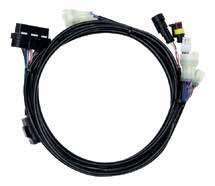
Available from: mccruise.com
Rad guaRd Ktm 890 adventuRe R/ Rally RadiatoR and HeadeR guaRds
An essential aftermarket part.
R For the hardcore adventure rider
R Easy to fit
R Video fitting instructions available
R Lightweight and doesn’t restrict air flow
R Made from 6060 T1–T5 aluminium
R Available in black, orange or polished alloy
R Three-year worldwide warranty
R Australian made
mosKo moto RaK PulloveR
Less to break, less to go wrong and less places for water to get in.
R eVent Expedition three-layer fabric with Direct Venting™ technology
R Anorak pullover style with side-access zipper for easy entry
R Articulated anatomical fit
R Fully seam-taped construction with 20mm seam taping
R Three pockets (two hand pockets, one chest pocket)
R Cohaesive® embedded hem and collar adjustment
R YKK waterproof VISLON® AquaGuard® zippers
R High-performance DWR (Durable Water Repellent)

Available from: Mosko Moto Web: moskomoto.com
RottWeileR PeRfoRmance QuicK fliP miRRoR mounts (aRRoW comPlete Kit)
Kit contains one left and one right mirror mount, two Arrow ambidextrous mirrors, hardware and stickers.
R Little to no vibration
R Greatly reduced wind buffeting
smK HybRid evo Helmet
Can be used in both open-face and full-face configurations.
R Removable chin bar
R Flip-down internal sun visor
R Pinlock-prepared UV-resistant visor
R Removable, washable inner lining
R Intercom ready
R ECE 22.05 approved
R Available in matt black or gloss white
R Sizes available XS up to 4XL

RRP: $249.95
Available from: All good retailers Web: mcleodaccessories.com.au
Water-repellent stretch and RipStop™ fabric construction for weatherproofing and comfort.
R Gore-tex® Grip™ breathable, waterproof membrane moulded to the lining on the palm side
R ERGO PROTECH® one-piece metacarpophalangeal protective shell in soft TPR
RRP: $204.95 – $370
Available from: Tyres 4 Bikes
Web: tyres4bikes.com.au
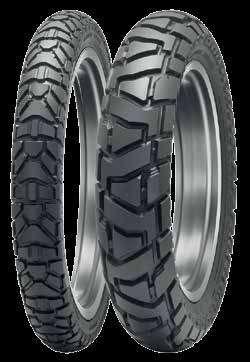
RRP: $215. On special for $169
Available from: Rad Guard
Phone: (02) 6658 0060 Web: radguard.com.au
R Low profile gives great centre/rear viewing when fully extended
R Does not inhibit the view of the trail like high, upright mirrors
R Folds in, saving the mirror if the bike is dumped
R Four totally unique mirror positions
R Clearest high-quality polished glass available
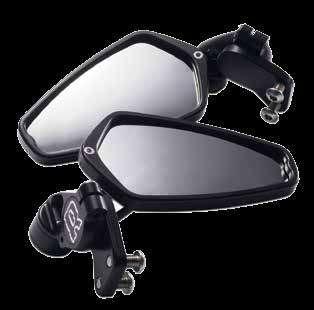
Email: info@andystrapz.com Web: andystrapz.com u
Phalangeal protective elements in soft TPR on the index and middle fingers
Anti-twist accordion strap between the little and ring fingers so your fingers don’t get pulled apart
Silicone print on the palm for improved grip

R Rugged billet aluminium construction
RRP: $450
Available from: Motorcycle Adventure Products Phone: 1300 898 560
Web: motorcycleadventure.com.au

‘Pull & Ride’ tab for easy on/off
Clear Vision Pad™ visorcleaning system on the left-hand side
Touch Screen™ system on the index finger and thumb
RRP: $299.95
Available from: Moto National Accessories Web: five.motonational.com.au

macna ion HaRd-WiRed electRic
Heated gloves
Totally waterproof with the ability to control the level of warmth for your hands.
R Fully armoured
R Touch tip
R Goat leather and Soft Flex cordura
R Raintex waterproof breathable membrane and Bemberg comfort liner
R Manufactured to meet or exceed CE Safety Standard EN 13594:2015
R RISC knuckle protection
R Screen cleaner
R Electric heated with four temperature levels
RRP: $299.95

Available from: All leading motorcycle dealerships Web: macnaridinggear.com.au
touRatecH susPension steeRing damPeR
Effectively optimises ride stability on the R1200GS.
R No more hard steering when cornering slowly with a heavy load
R Damping can be adjusted very finely through 24 clicks
R A distinct improvement in ride dynamics when carrying heavy luggage
R Makes the bike’s ride and handling significantly more stable, less tiring, and safer
R Only fits BMW R1200GS(LC) 2013
R Improves stability of the small front wheel with a knobby when riding off-road or on sand
R Less fatigue on long journeys
RRP: $920.14
Available from: shop.touratech.com.au Web: touratech.com.au
RocKy cReeK designs folding biKeRZ cHaiR
Small enough to take with you on any ride.
R Folds into a bag measuring 38cm x 10cm x 12cm
R Will fit in a pannier, bag, backpack, or gear roll
R Lightweight but strong
R Chair size is 52cm x 50cm x 65cm when opened
R Chair in the bag weighs 940g and will hold up to 120kg
R Wide feet so it won’t sink into the soft earth
R Buy one Bikerz chair and get a free camping table worth $59.95 when you put in the code ADVRIDER02 at the checkout
RRP: $89.95 plus postage and handling
Available from: Rocky Creek Designs Web: rockycreekdesigns.com.au

PRocycle dR650 big-boRe 790cc Kit
More grunt than a wild boar.
R 9.5:1 compression ratio
R 110mm bore
R Increased squish area over the 790cc kit
R Dished piston dome
R Straightforward installation
R Kit includes piston, rings, wrist pin and circlips, cylinder sleeve, custom-made multi-layer steel head gasket, OEM metal base gasket, tensioner gasket and cam-bolt lock plate
RRP: $1090 plus postage

Available from: Adventure Bike Australia Web: adventurebikeaustralia.com.au

RottWeileR PeRfoRmance PRo edition full-intaKe system – Ktm
790/890 adventuRe (all)
Drop in 10+ HP at 6300rpm safely with no mapping, as tested by Rottweiler.
R Thick, robust, rotomoulded construction
R Race tested at professional-level rallies by Rottweiler
R 0.77kg weight reduction
R Included filter is supplied dry
R Temperature sensor is placed to be hidden and better protected from seat damage
R Packable and replaceable main filter with removable cage
RRP: From $649
Available from: Motorcycle Adventure Products Phone: 1300 898 560
Web: motorcycleadventure.com.au

macna eQuato
Men’s and ladies’ jacket for dedicated riders.
R Air-vent panels
R Removable thermo liner
R Separate Raintex waterproof and breathable lining
R Reflection on chest and back
R Night Eye reflection
R Safe Tech CE armour protection at shoulder and elbow
R Coat hanger
R Arm adjustment strap

Pod K seRies Knee bRaces
Ligament and impact protection built for adventure.
R Premium materials
R Lightweight and durable
R Padding and venting for long days in the saddle
R CE impact protection
R K8 2.0 carbon frame in sizes SM – XL
R K4 2.0 composite frame in sizes XS – 3XL+
RRP: $499.95
Available from: Your local motorcycle dealer Web: macnaridinggear.com.au

RRP: $779.70
Available from: Leading motorcycle retailers Web: podactive.com/where-to-buy/
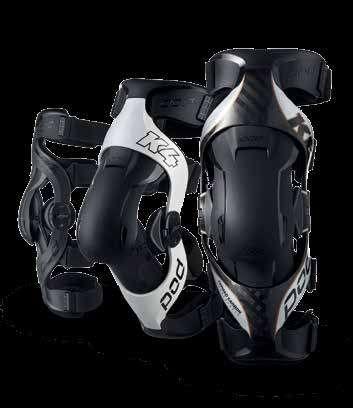
Held seRic gloves
A winter glove. Held has been making gloves for 75 years!
R Gore-tex membrane with five-year warranty
R Stretch-fabric back and goatskin palm
R Special leather at thumb and finger for smartphone operation
R Visor wiper
R Certified under norm EN 13594:2015 ‘protected glove for motorcyclists’
R SAS-TEC® knuckle protection
R Sizes: 7-12.
R Available in Black 01
RRP: $280
Web: mig.bike
Email: info@mig.bike Phone: 1300 916 916






TraX Adventure hard case luggage and accessories are the choice of experienced world travellers. Water and dust proof, tough and secure, no matter what the continent or how extreme the conditions, there’s no place on earth these things wont go.
If you’re travelling near or far, make TraX Adventure luggage part of your adventure.











